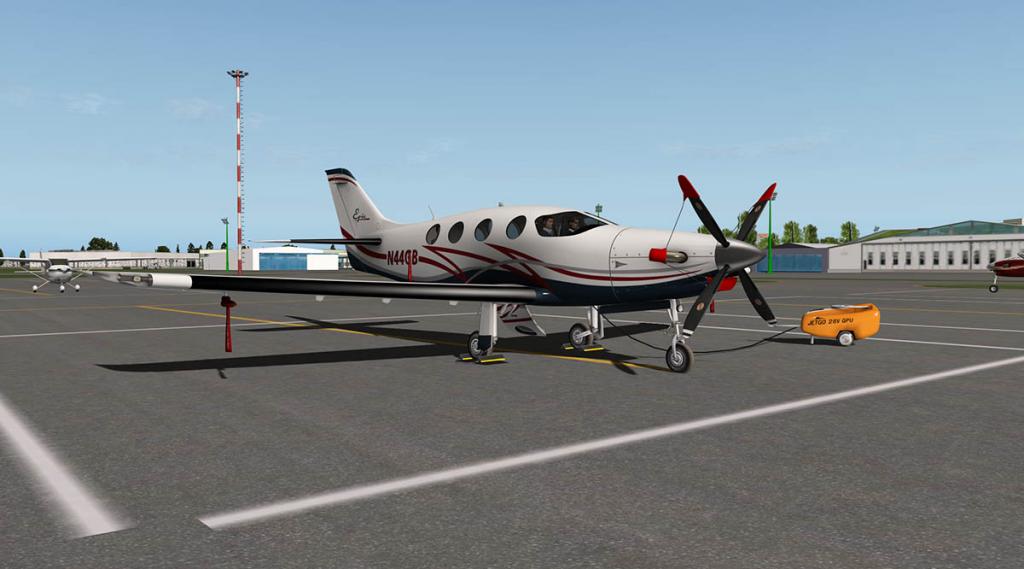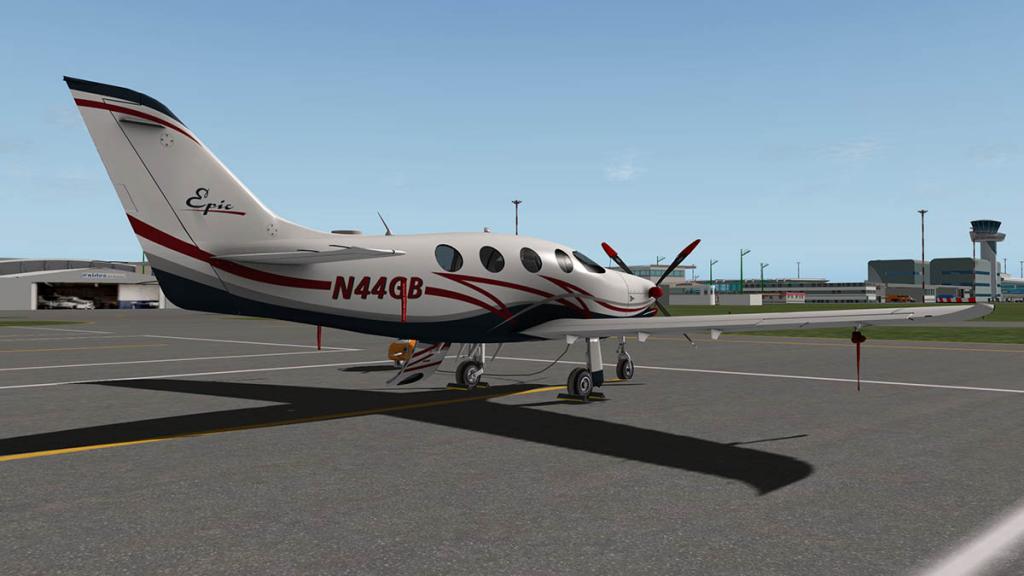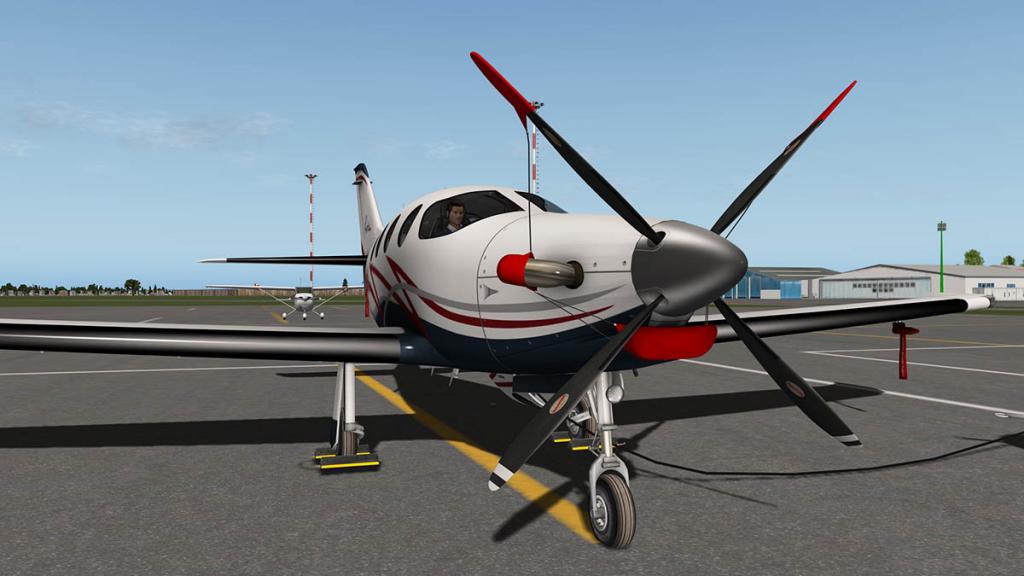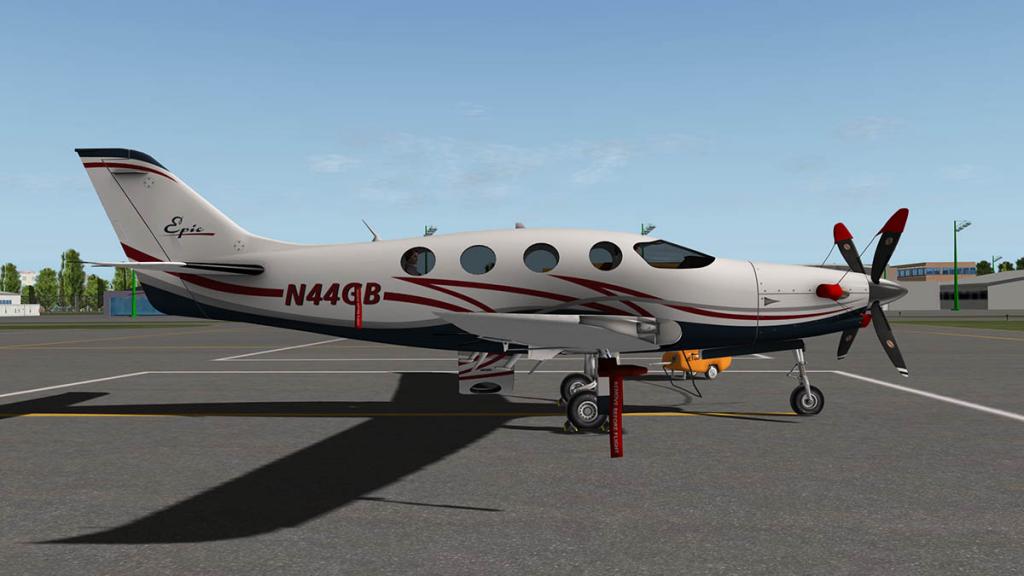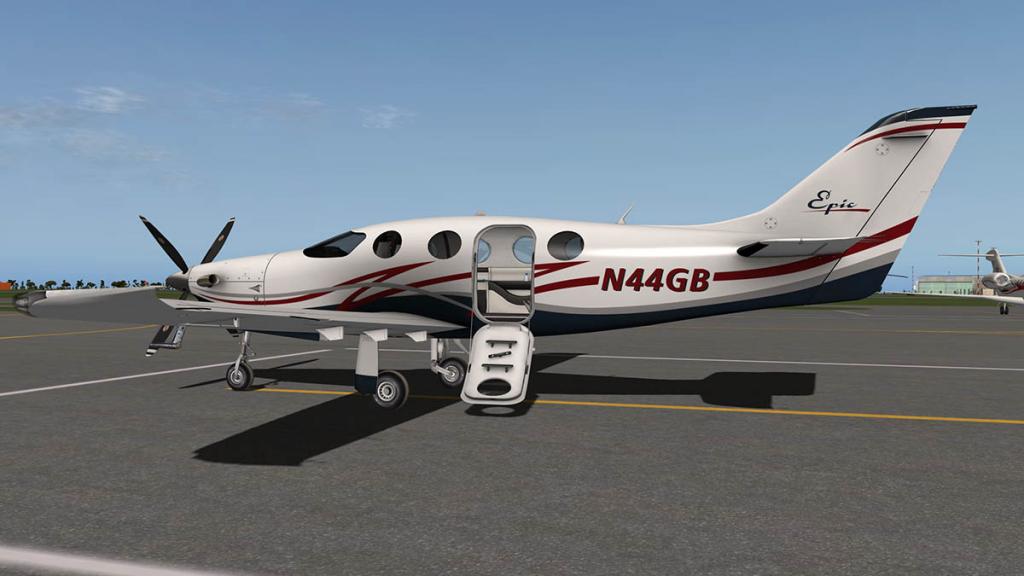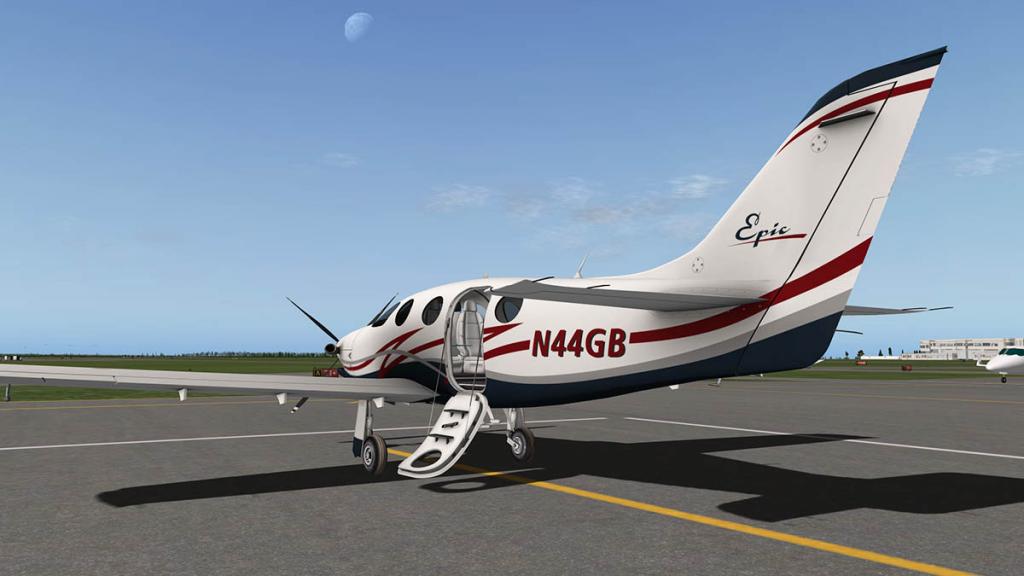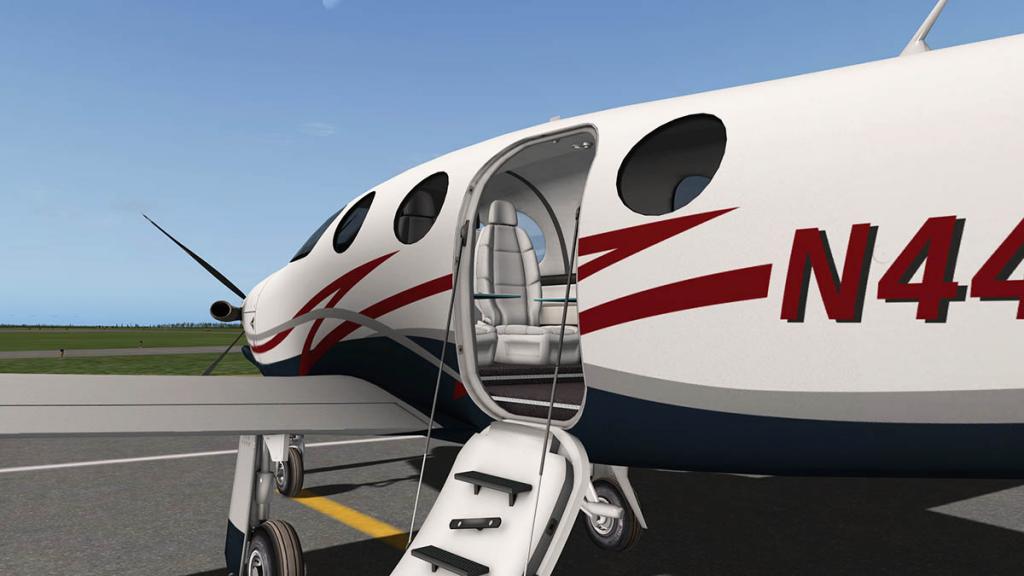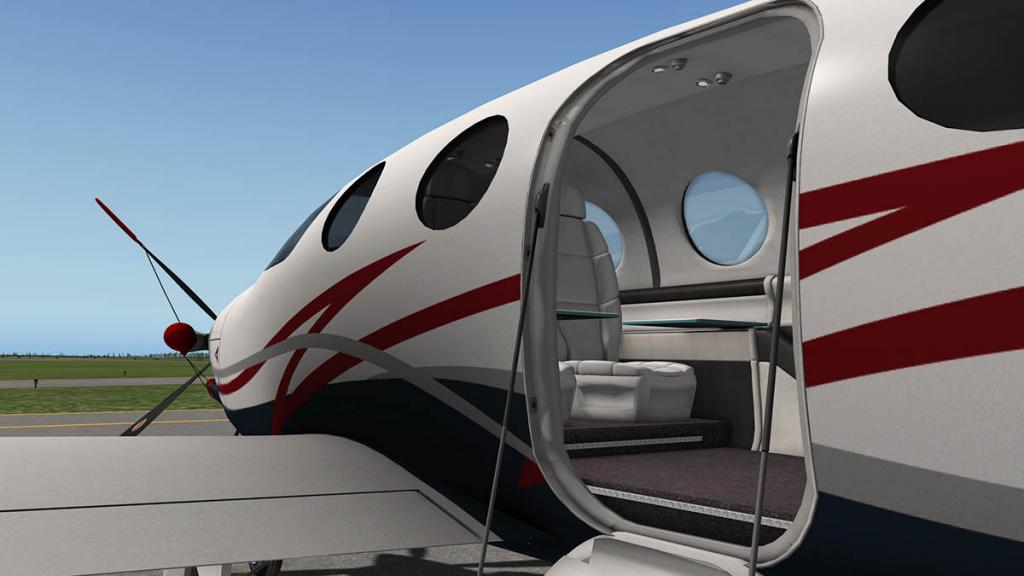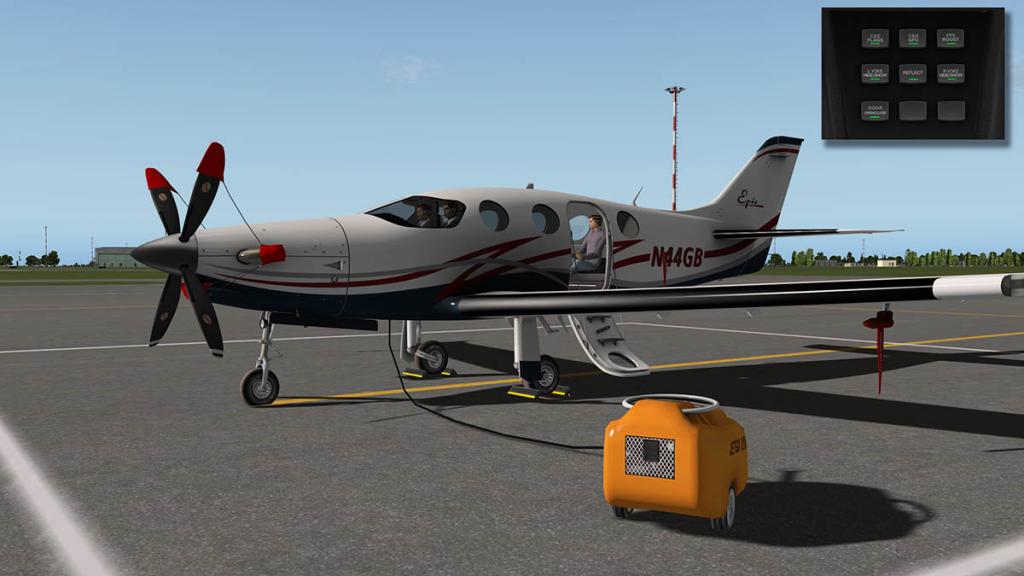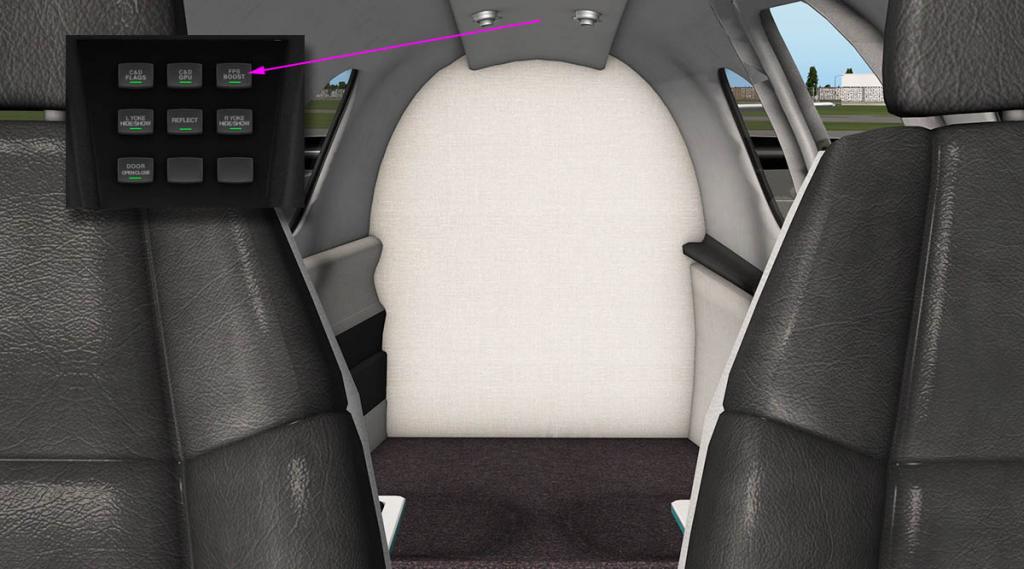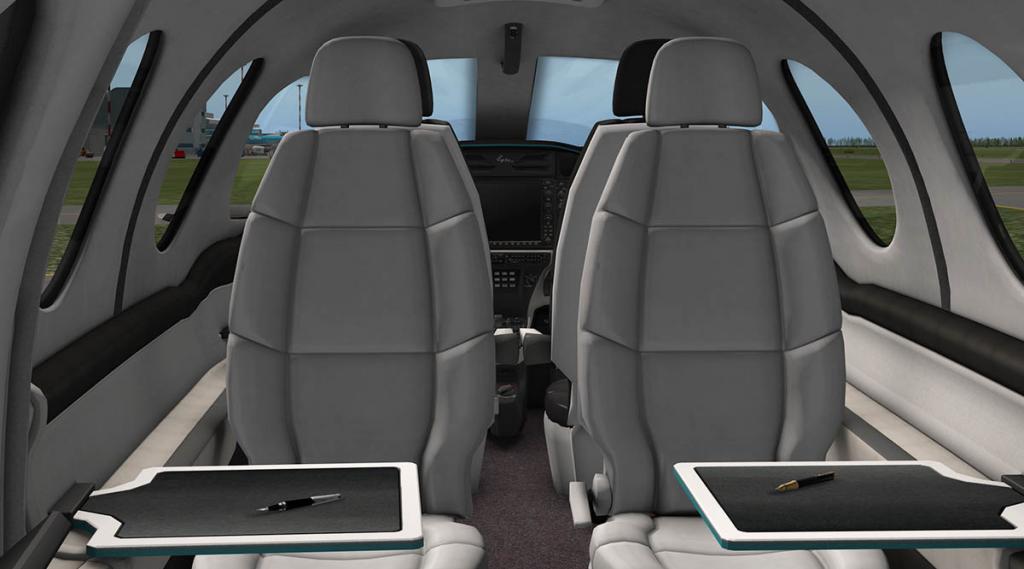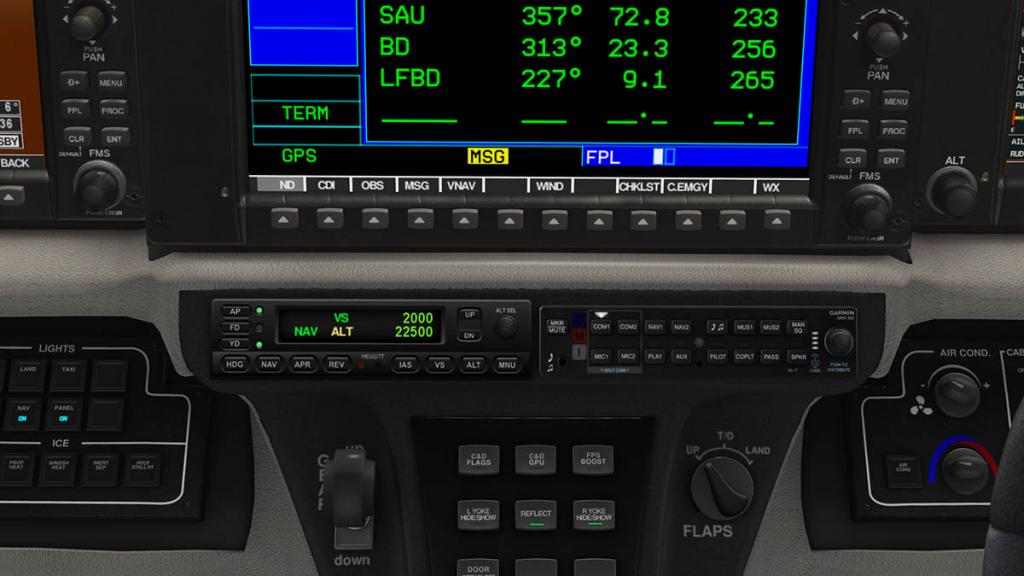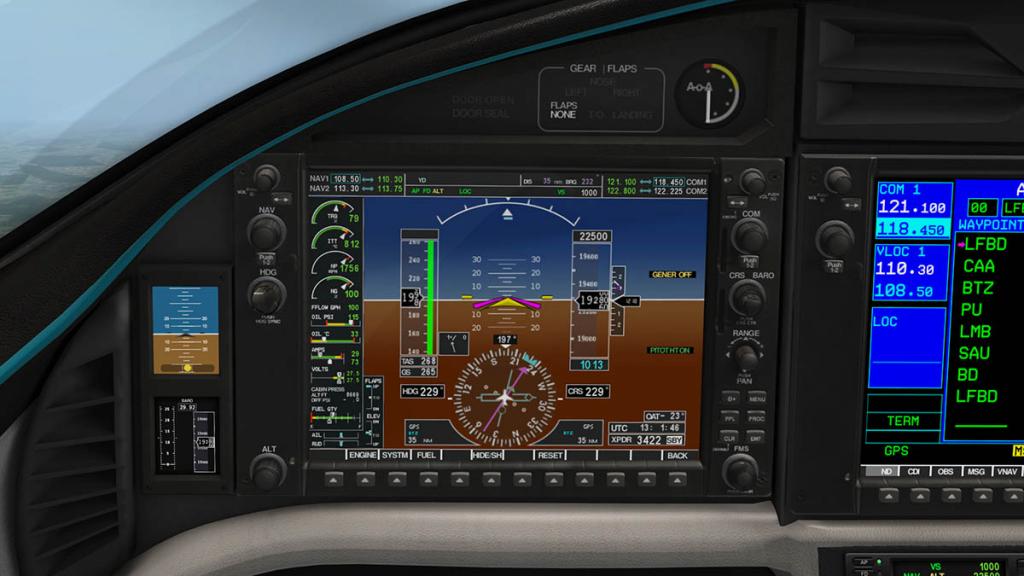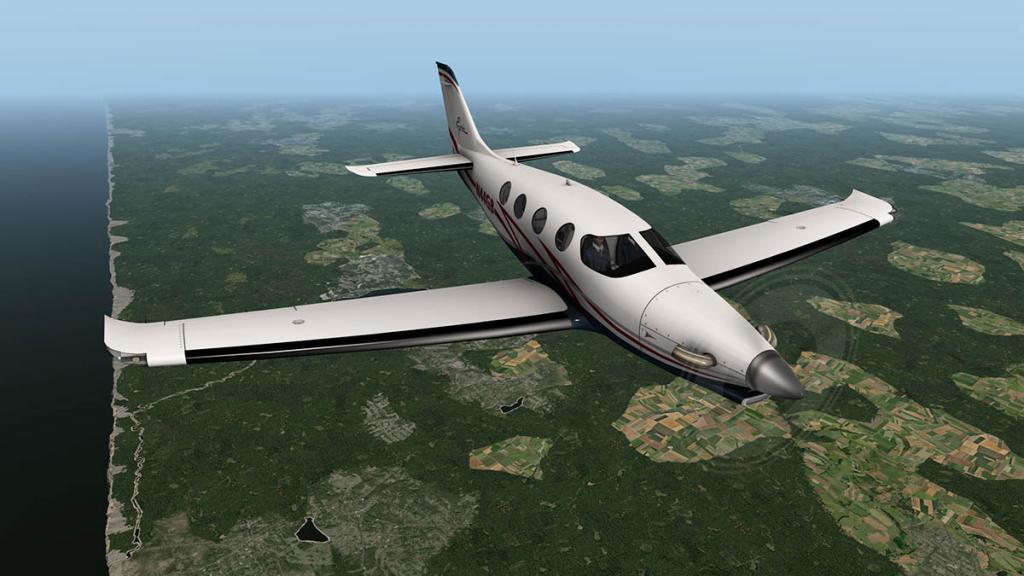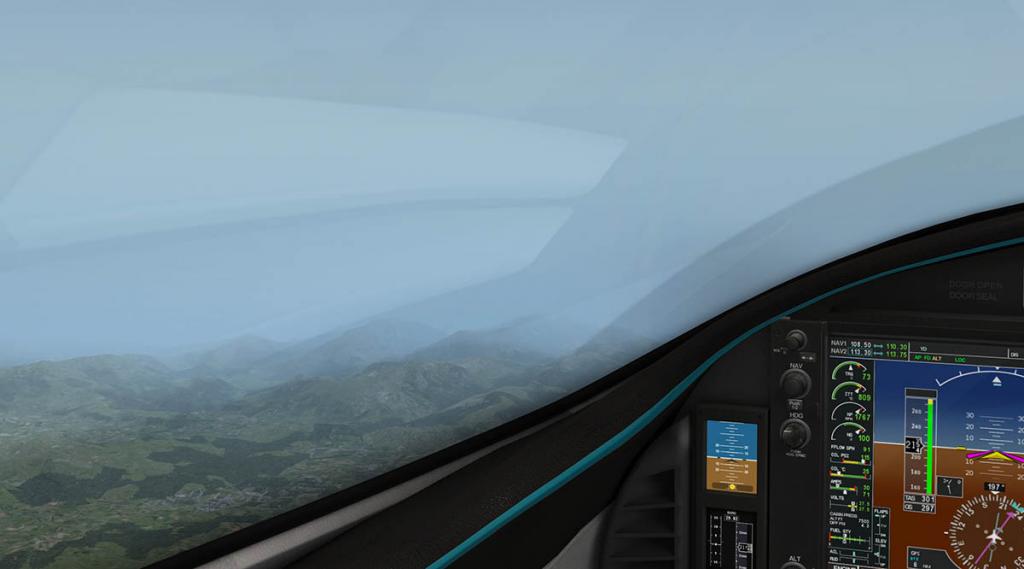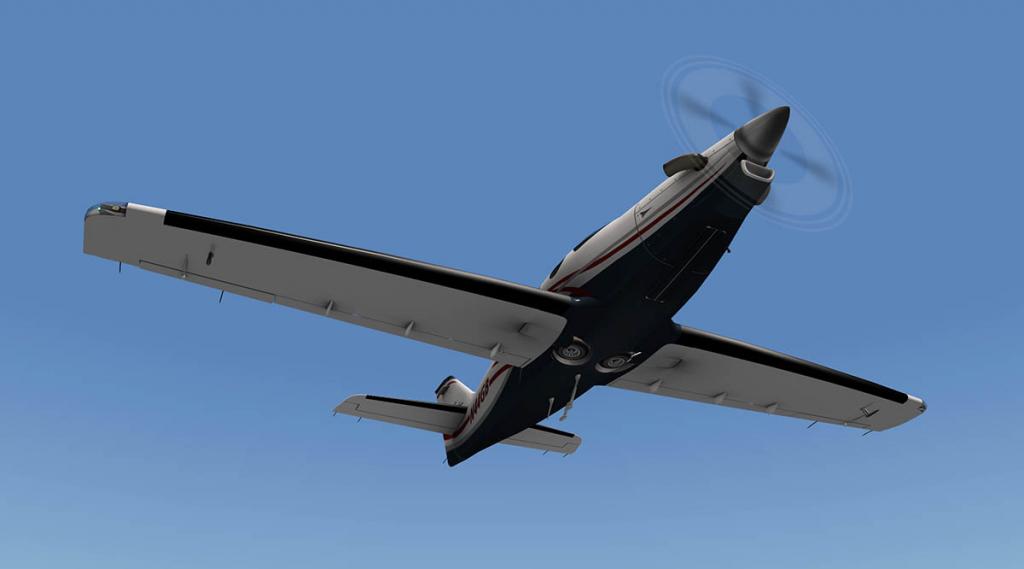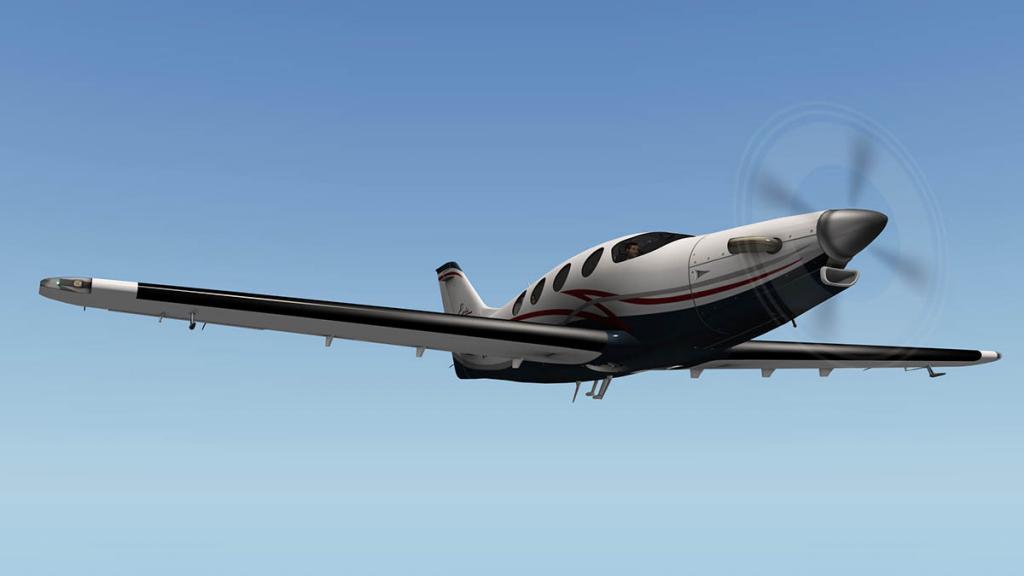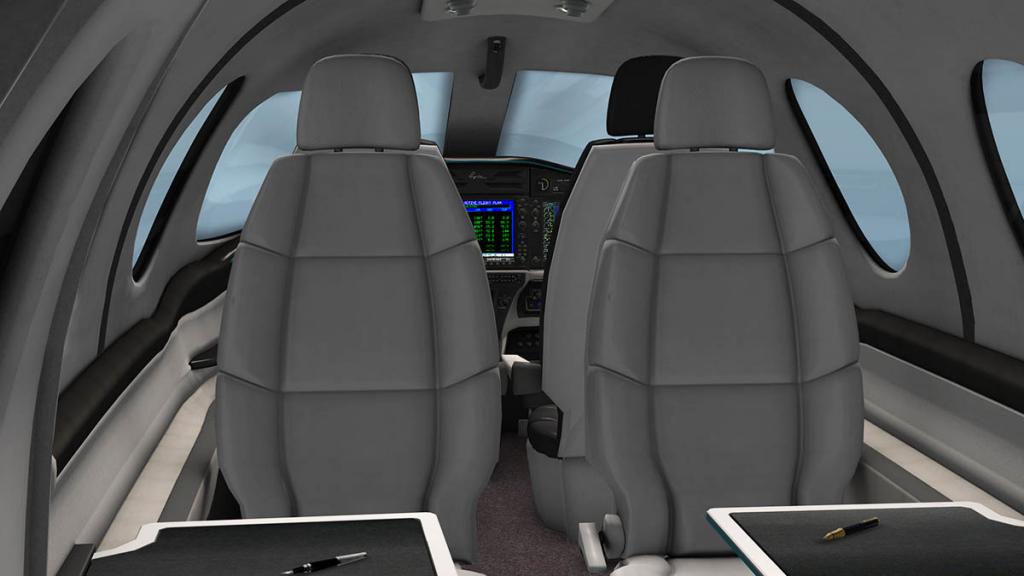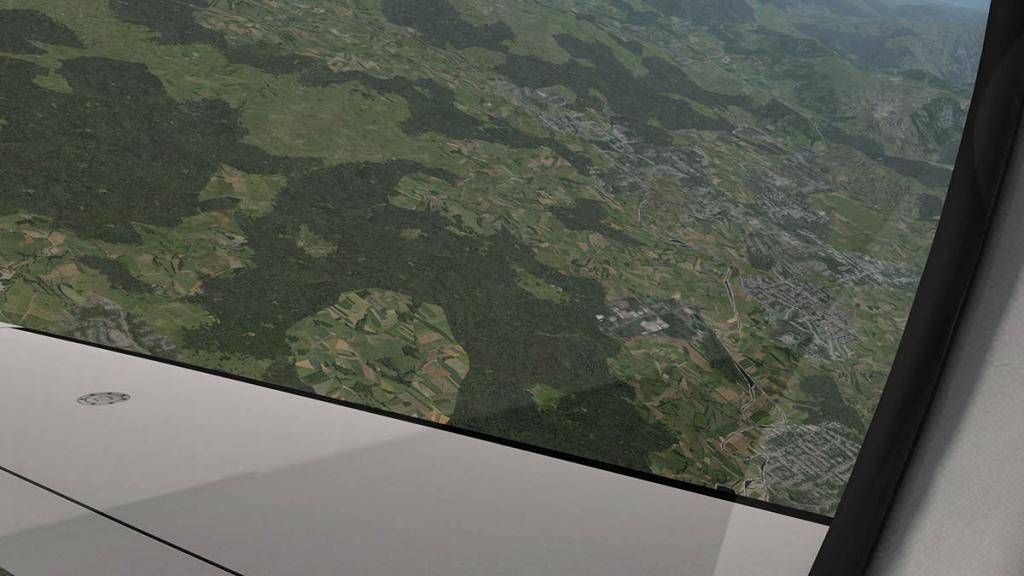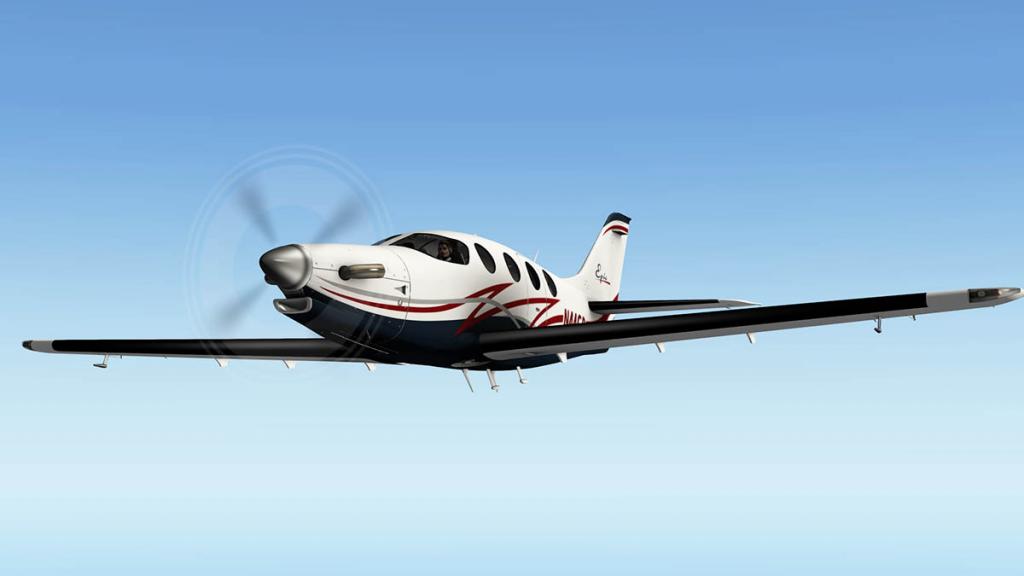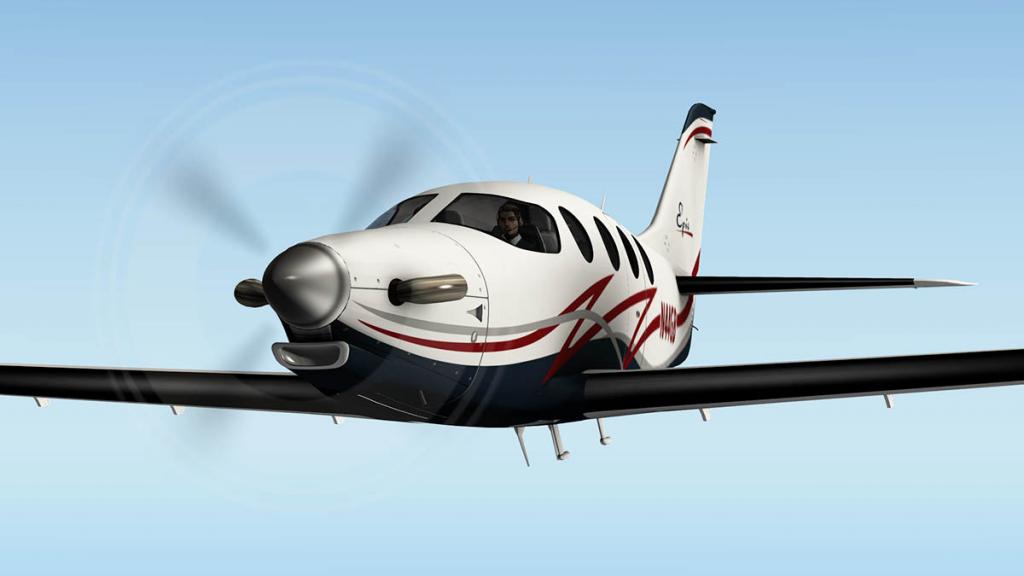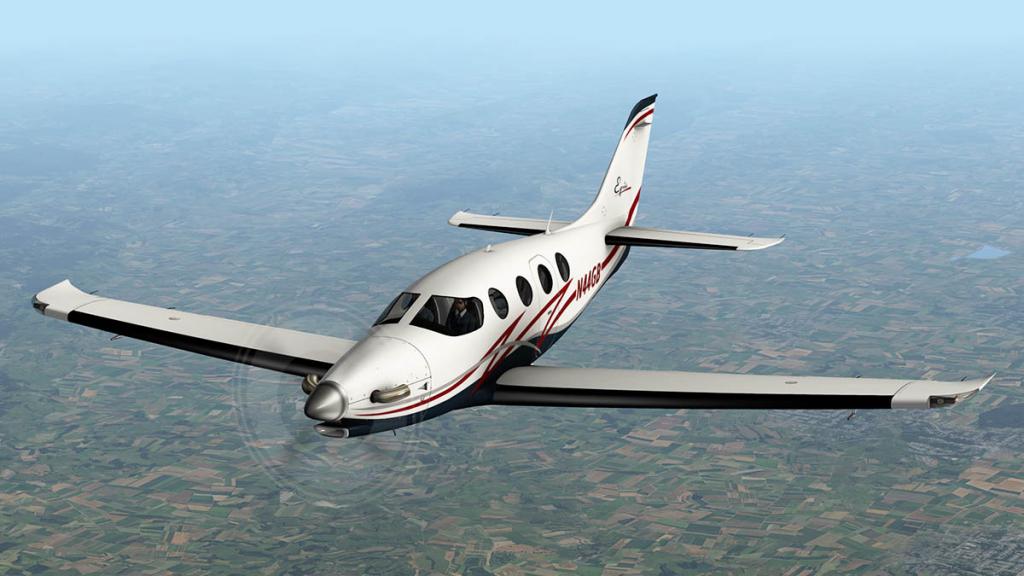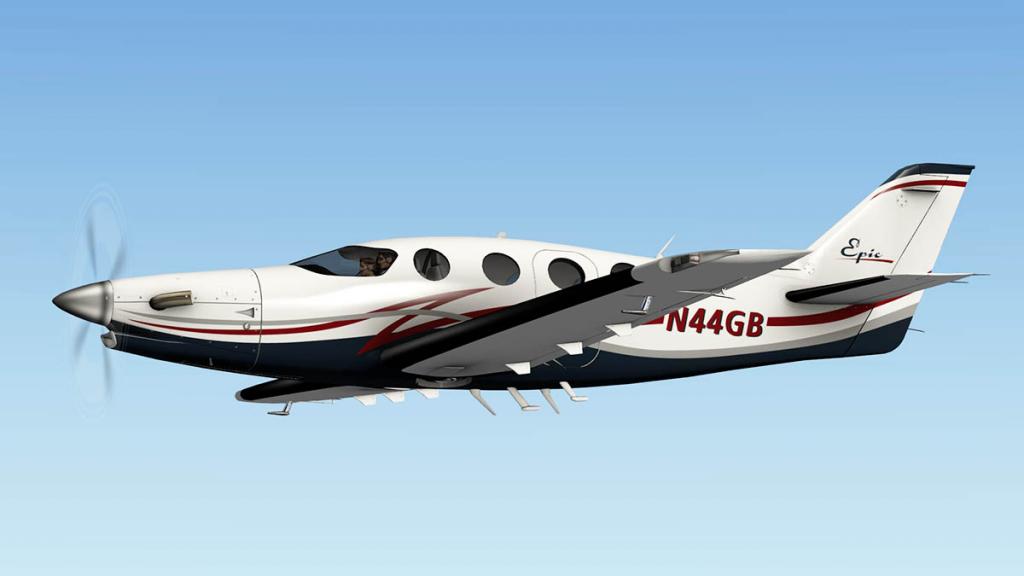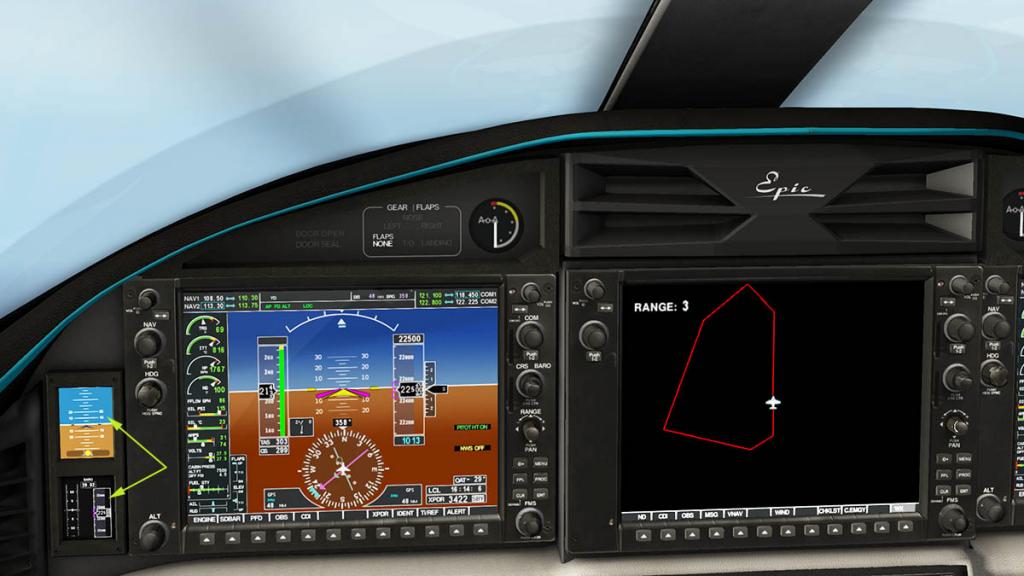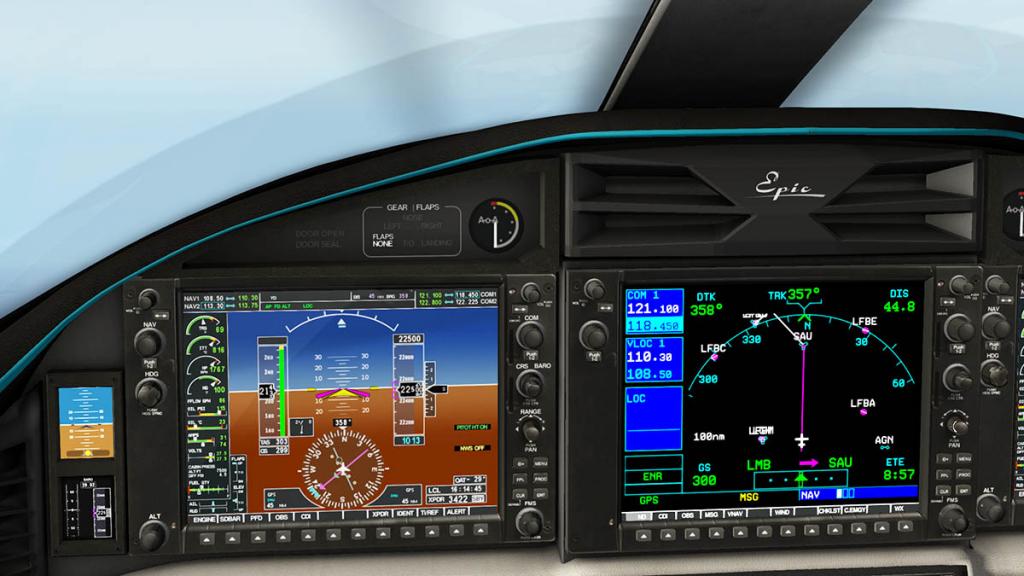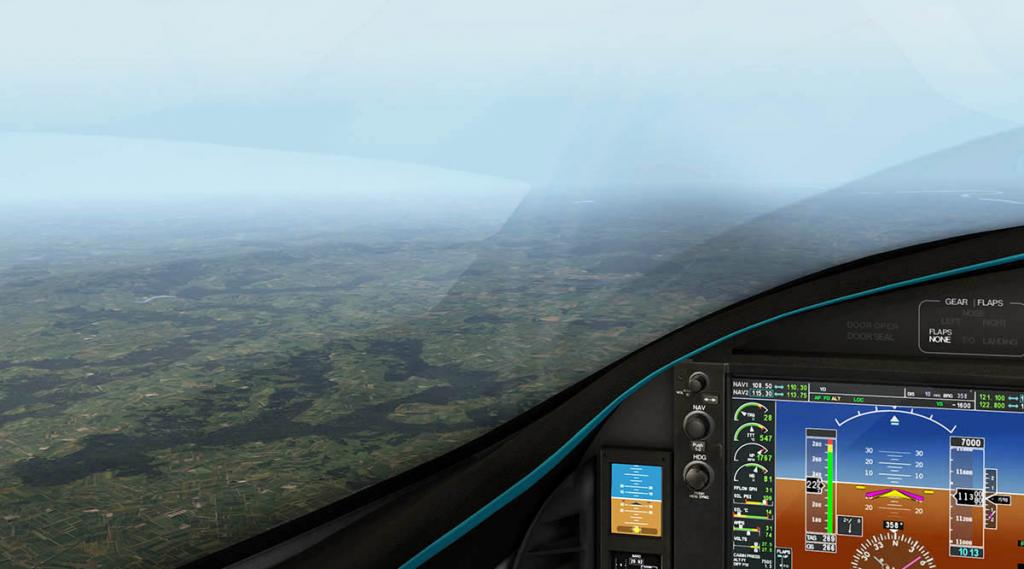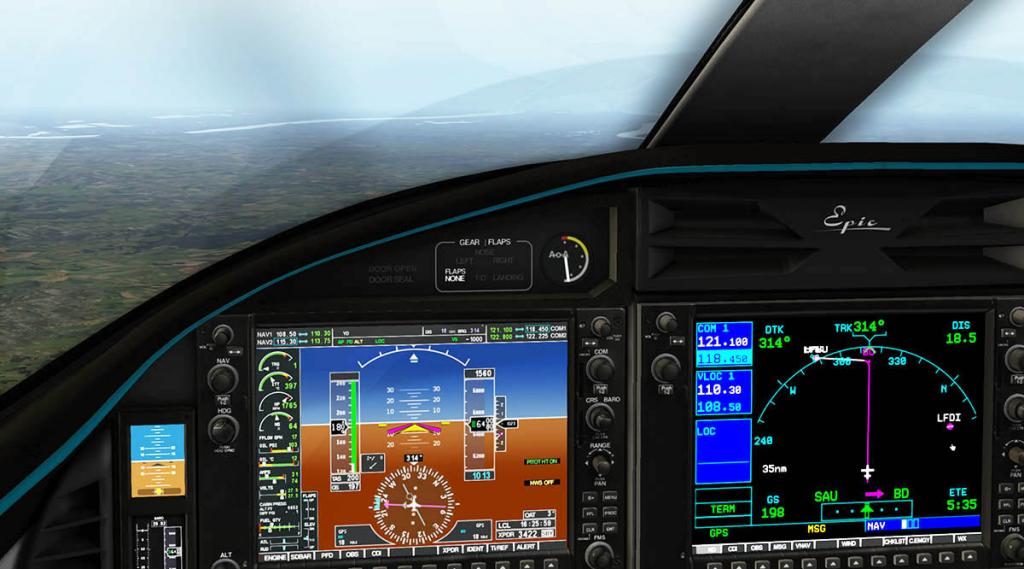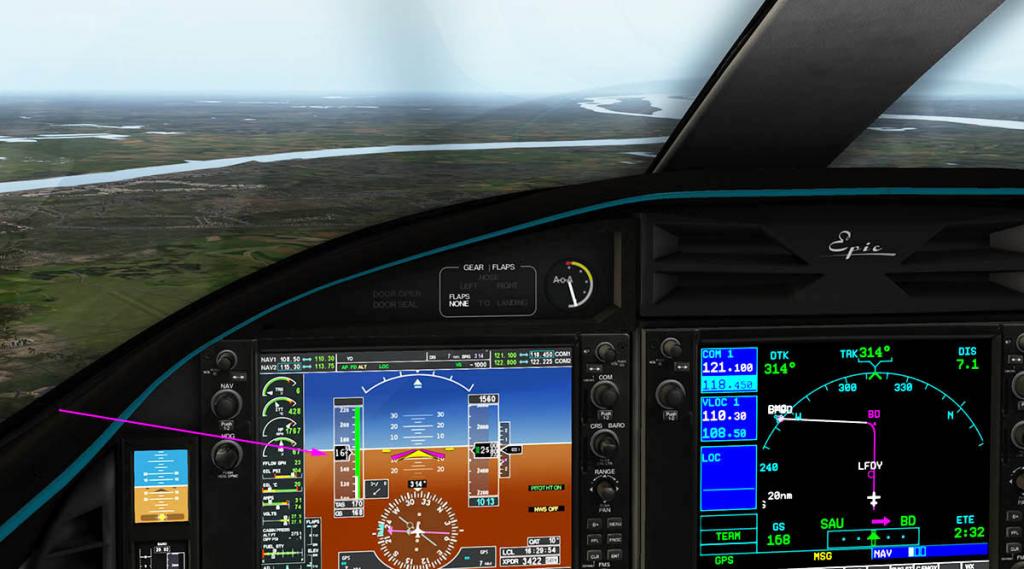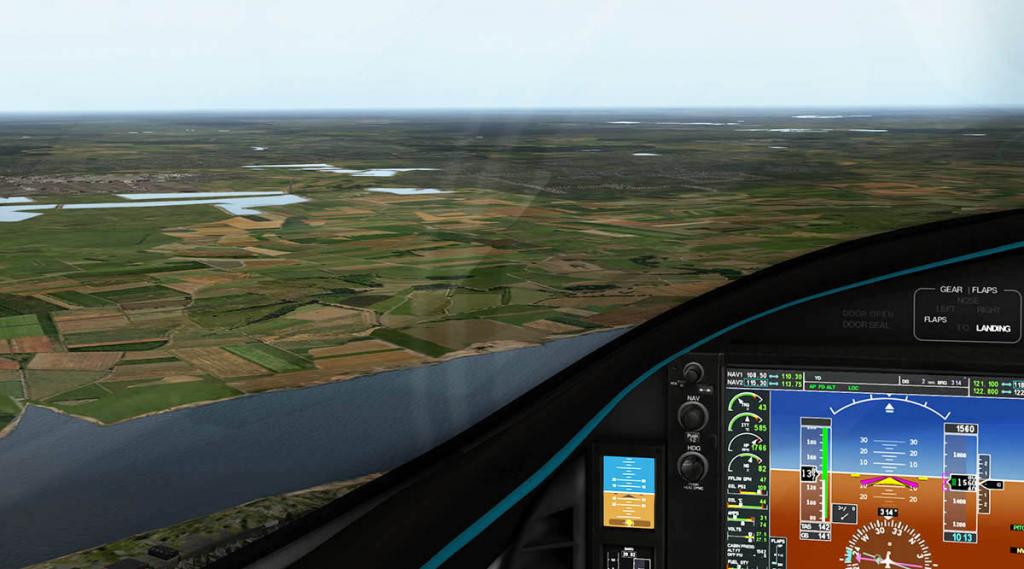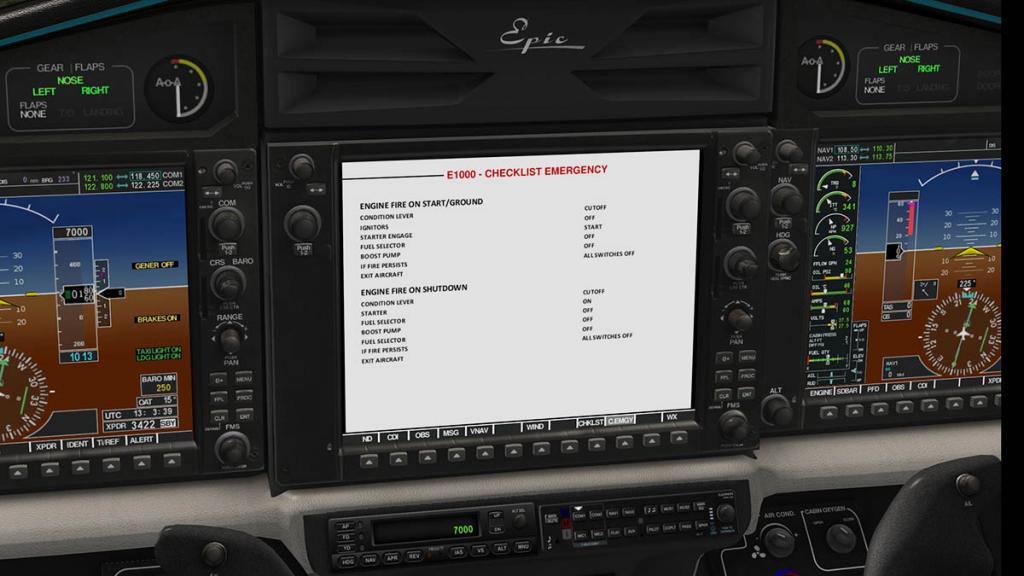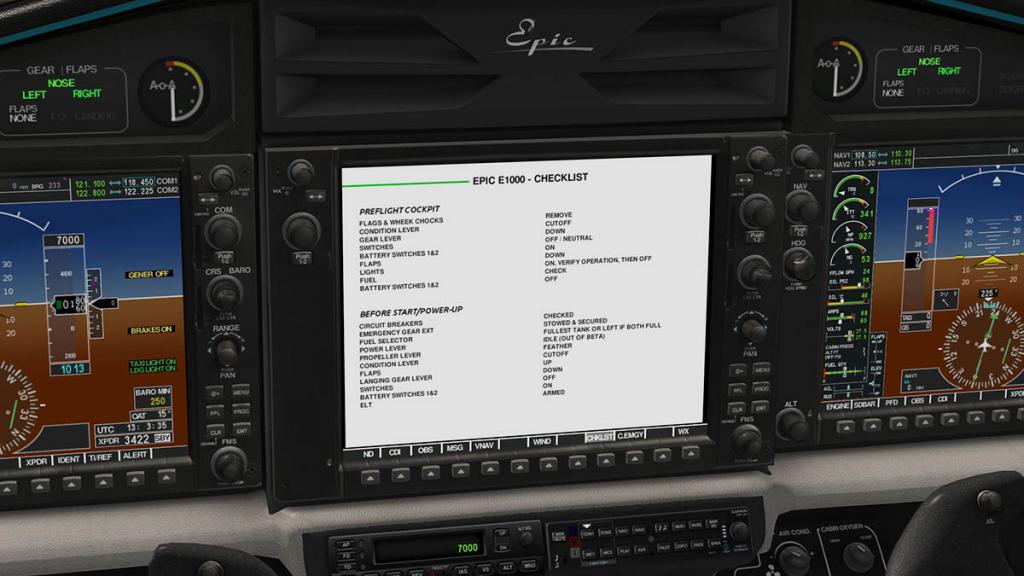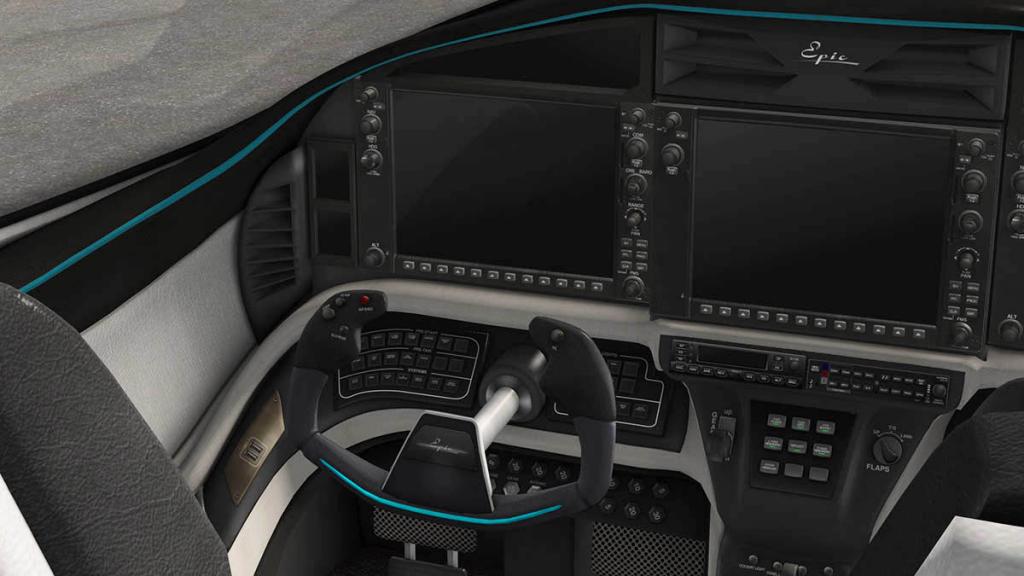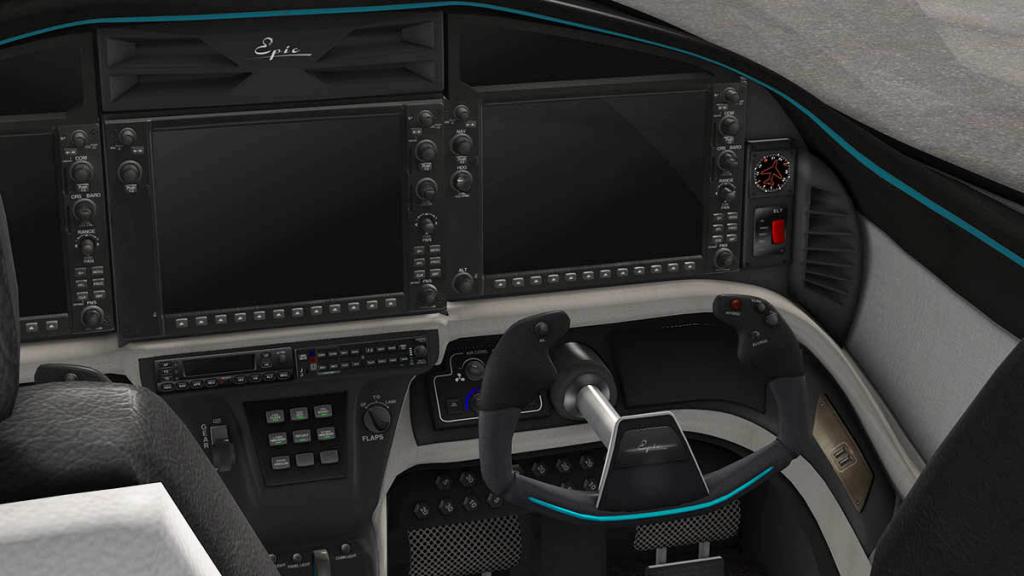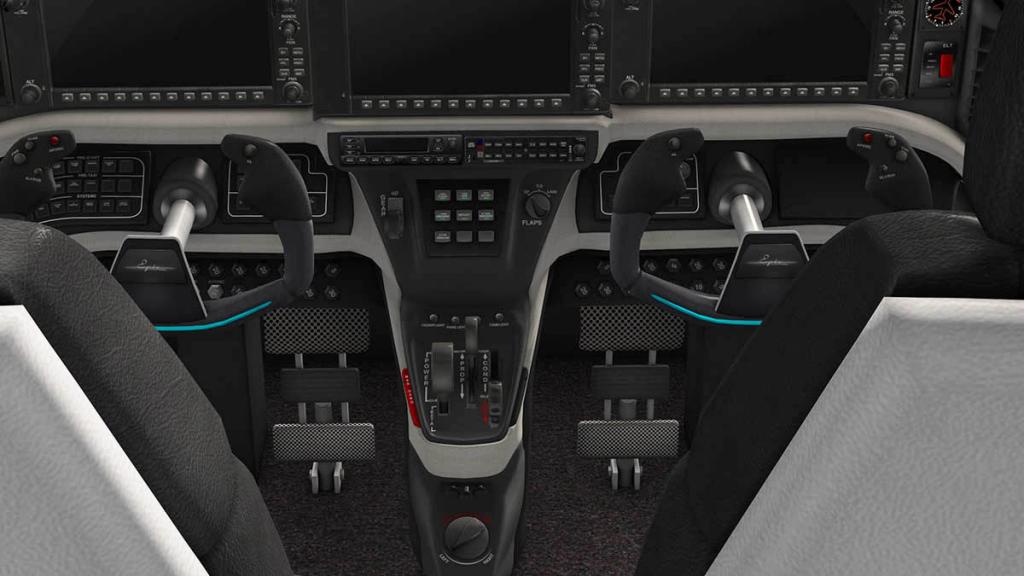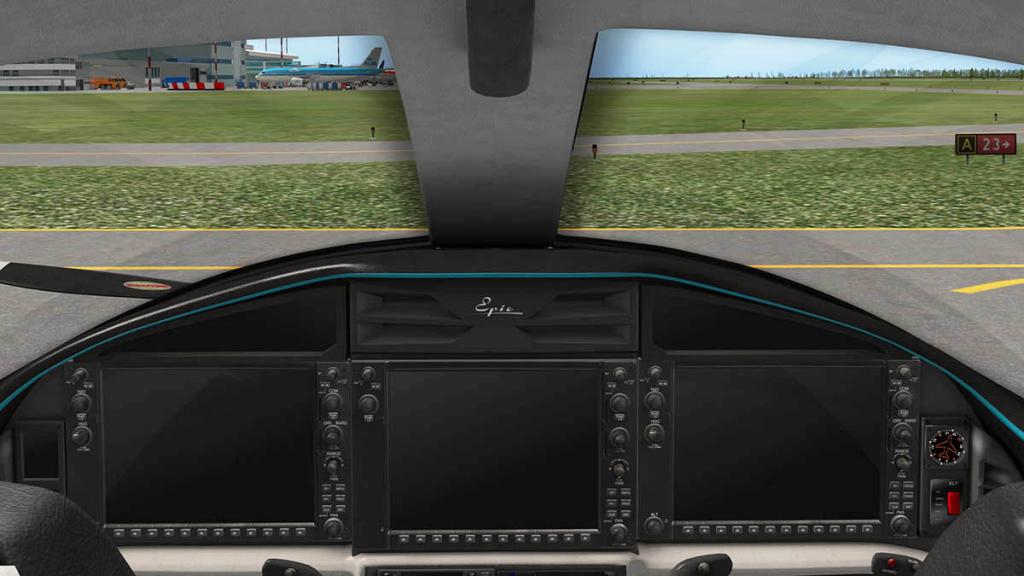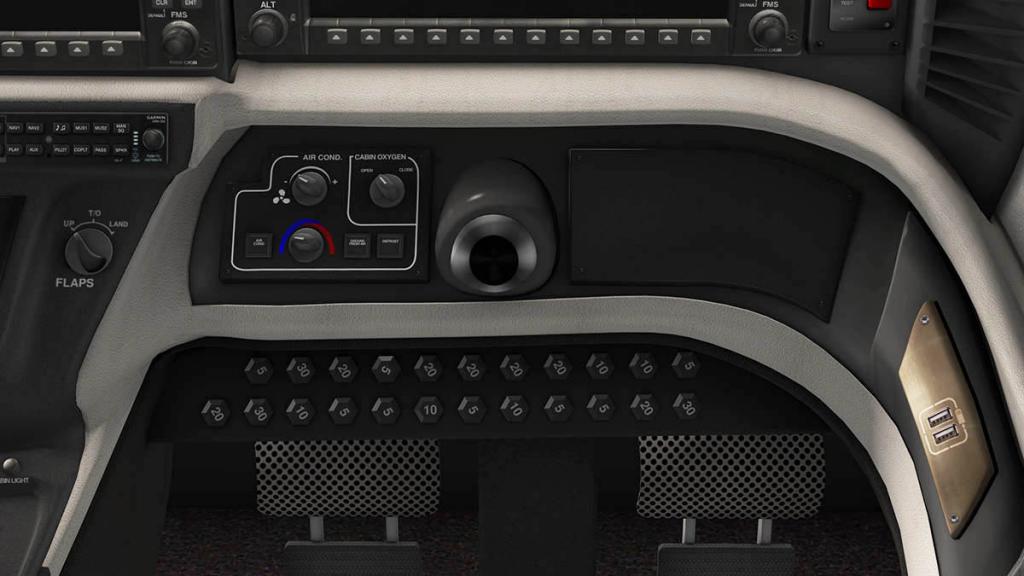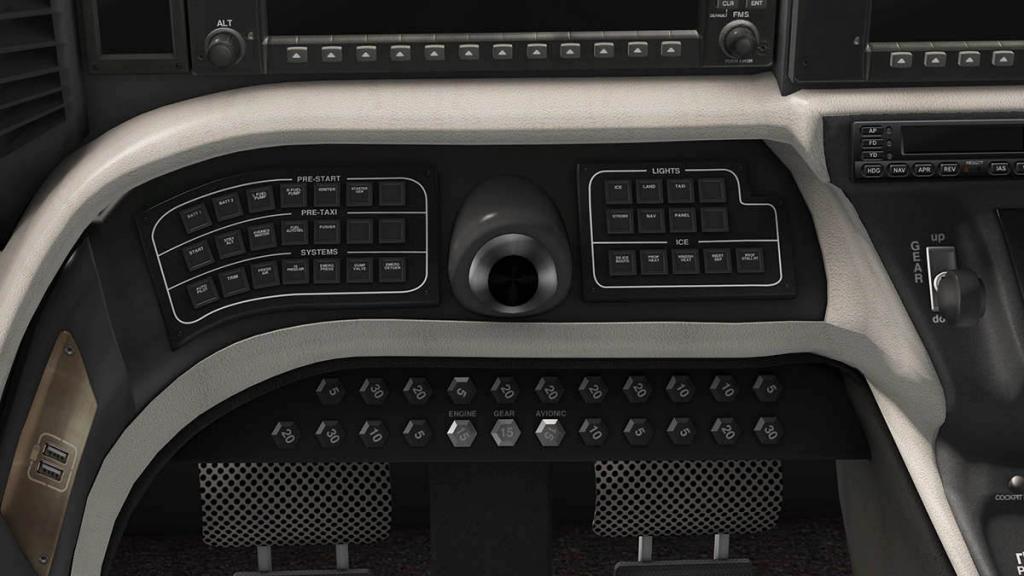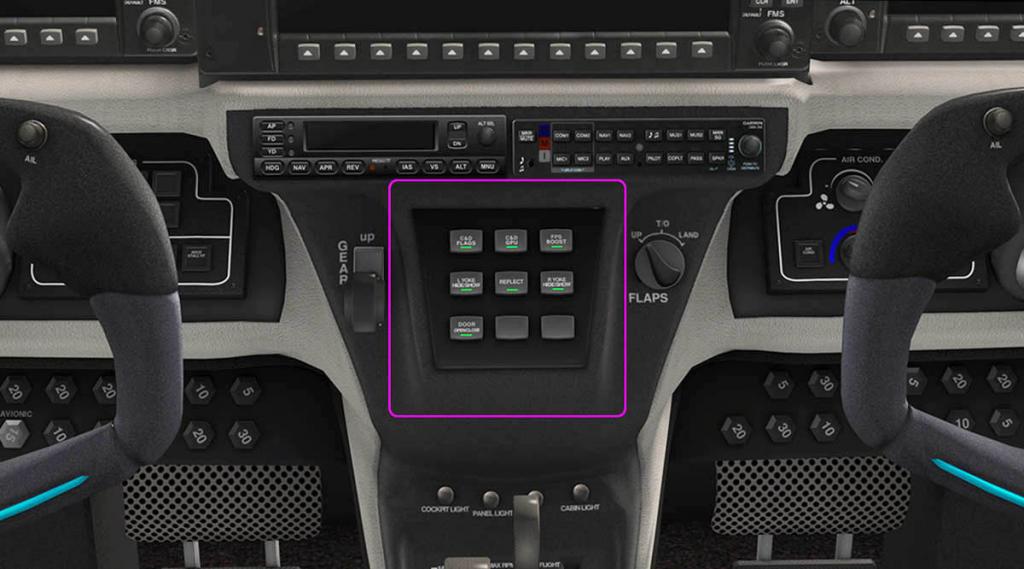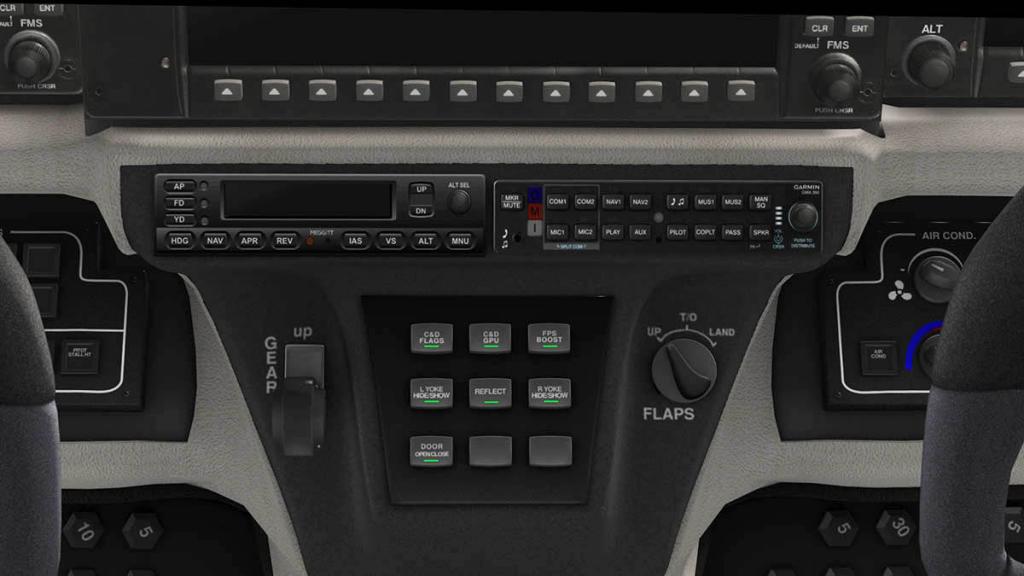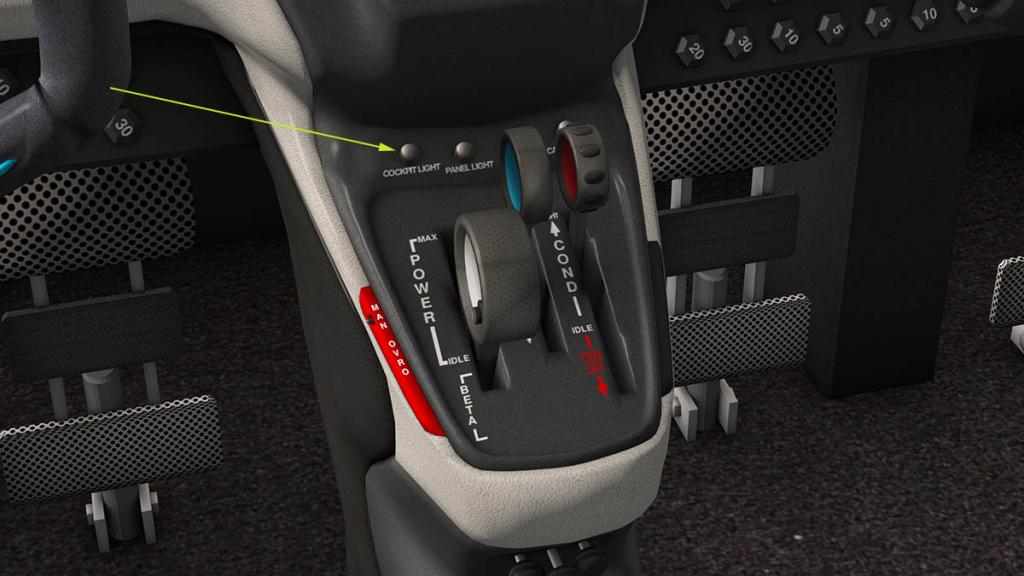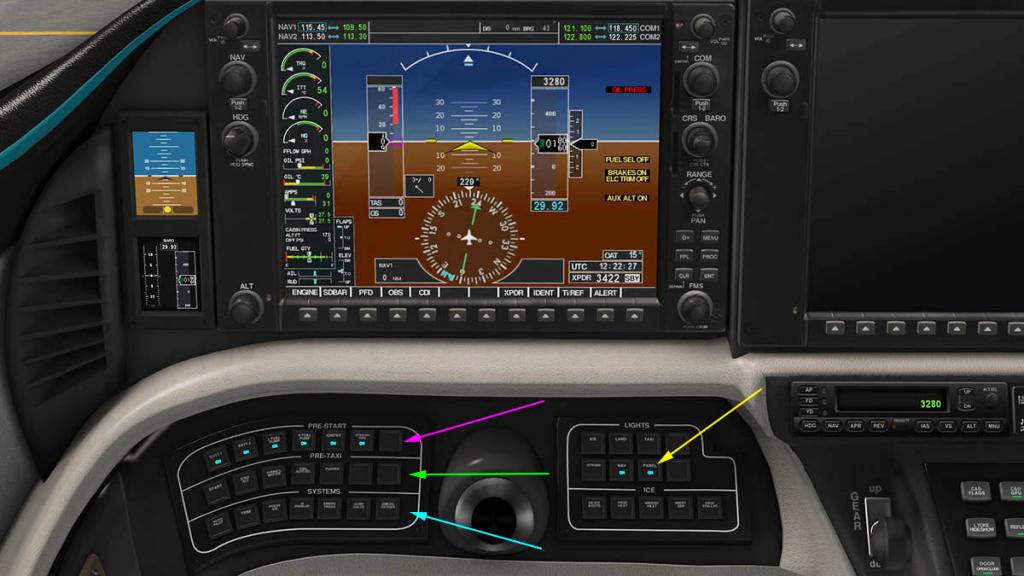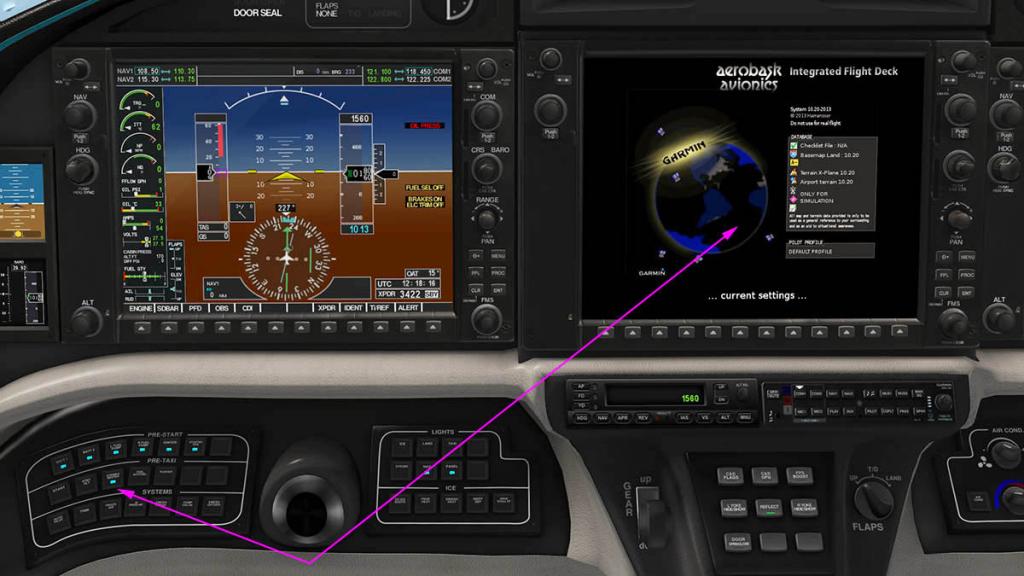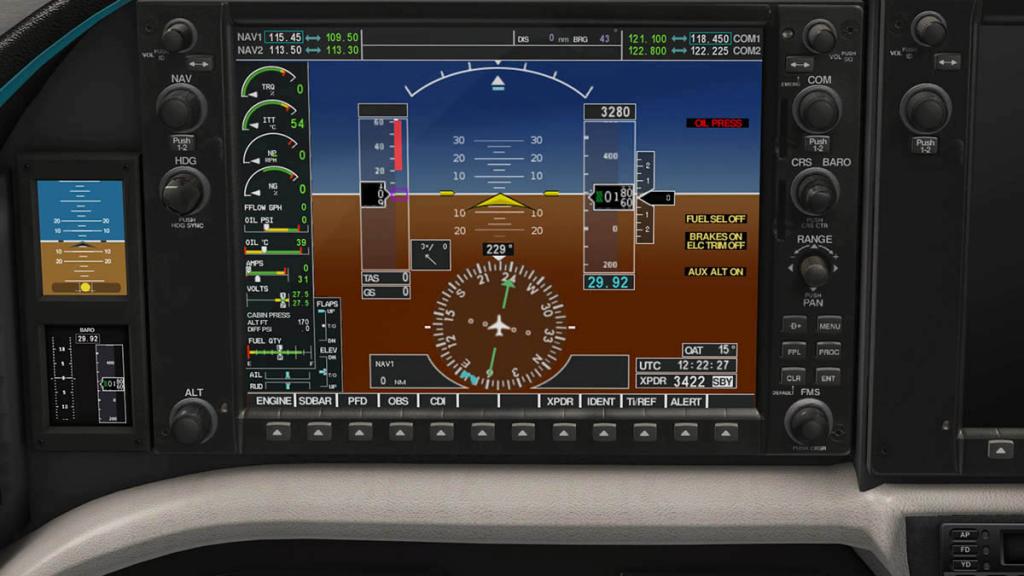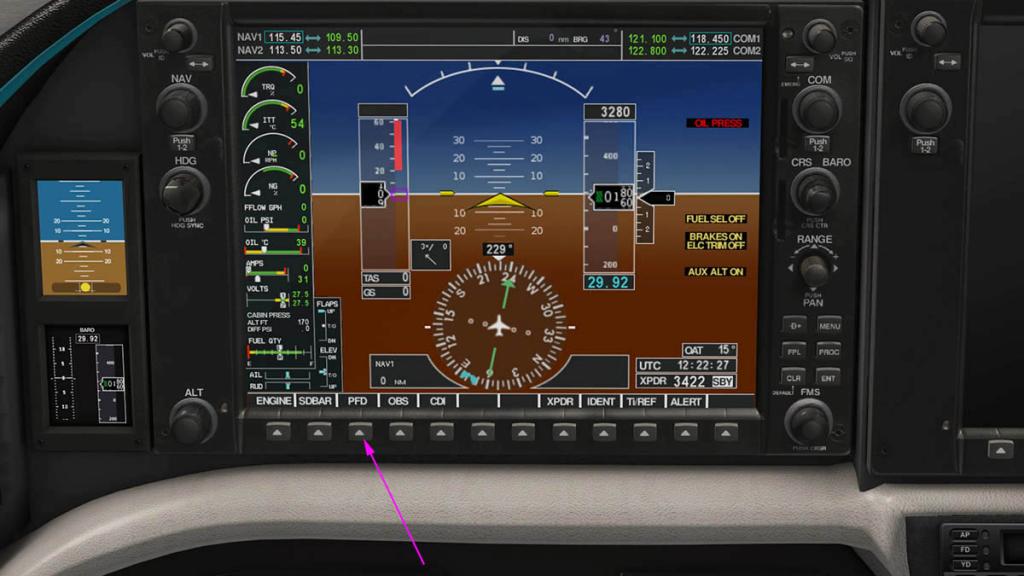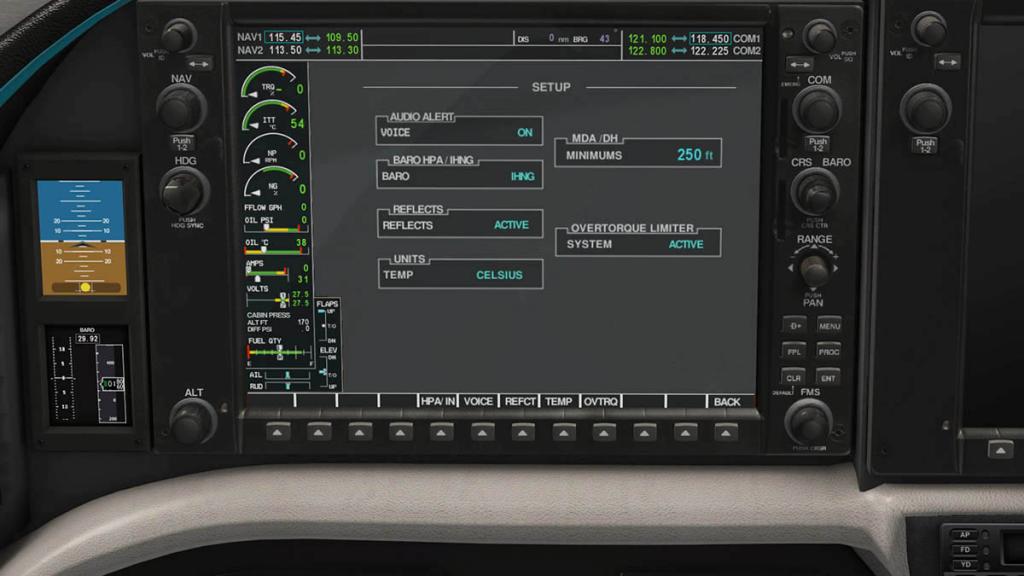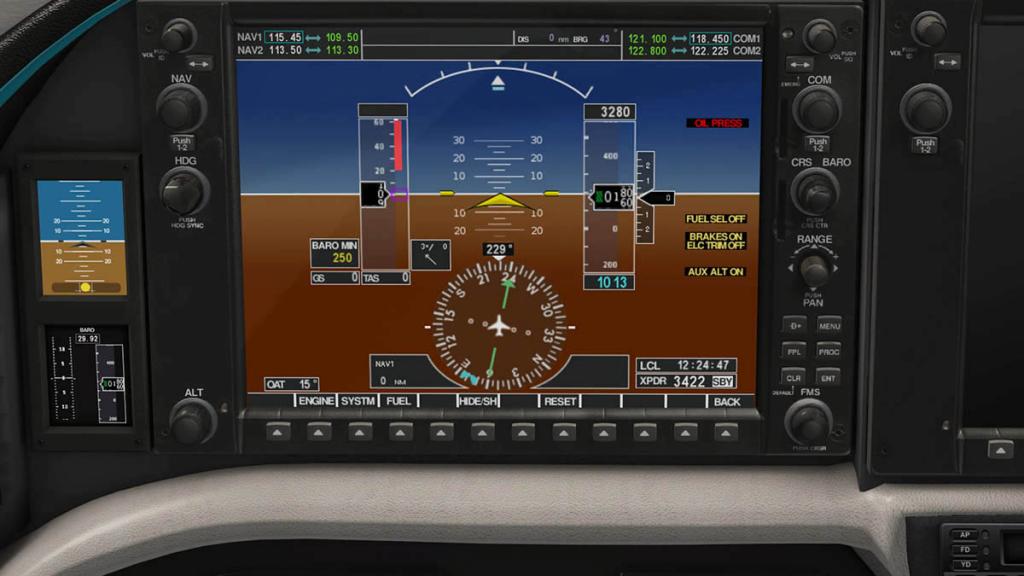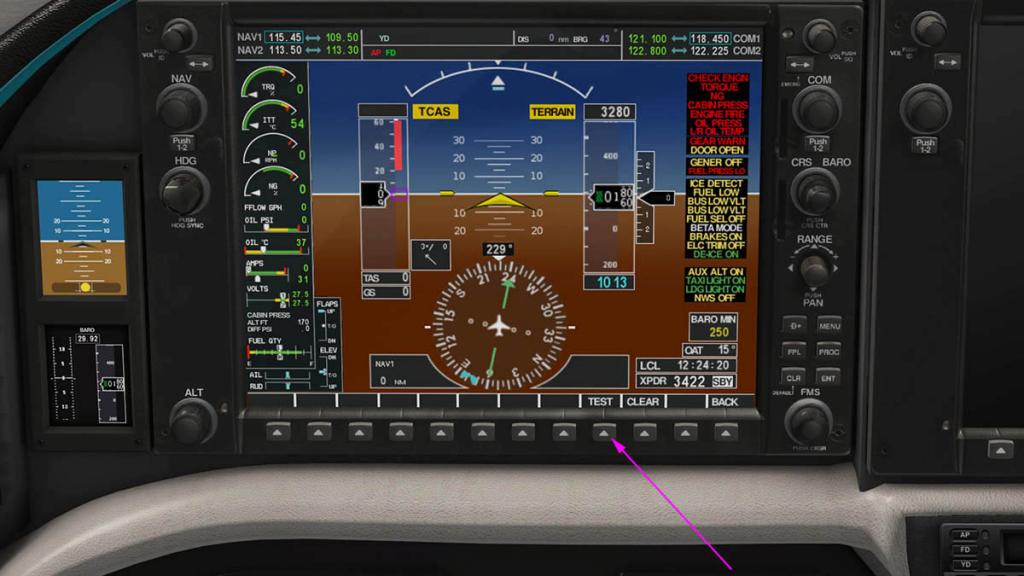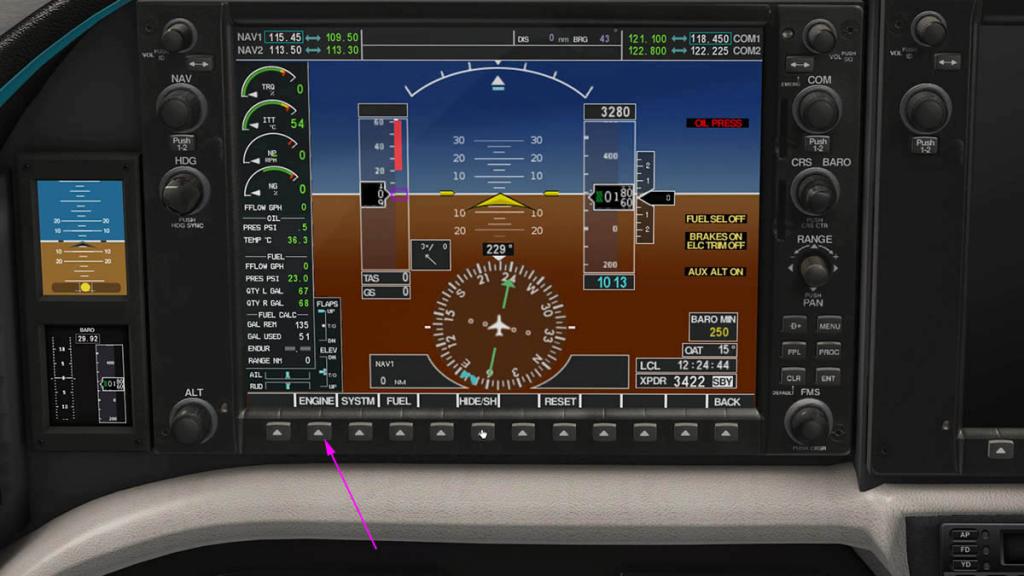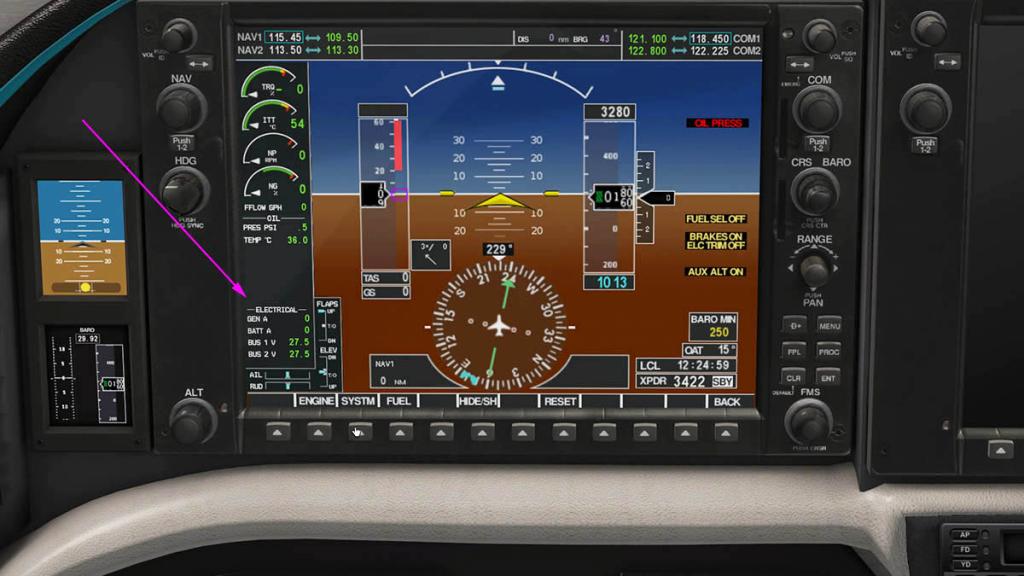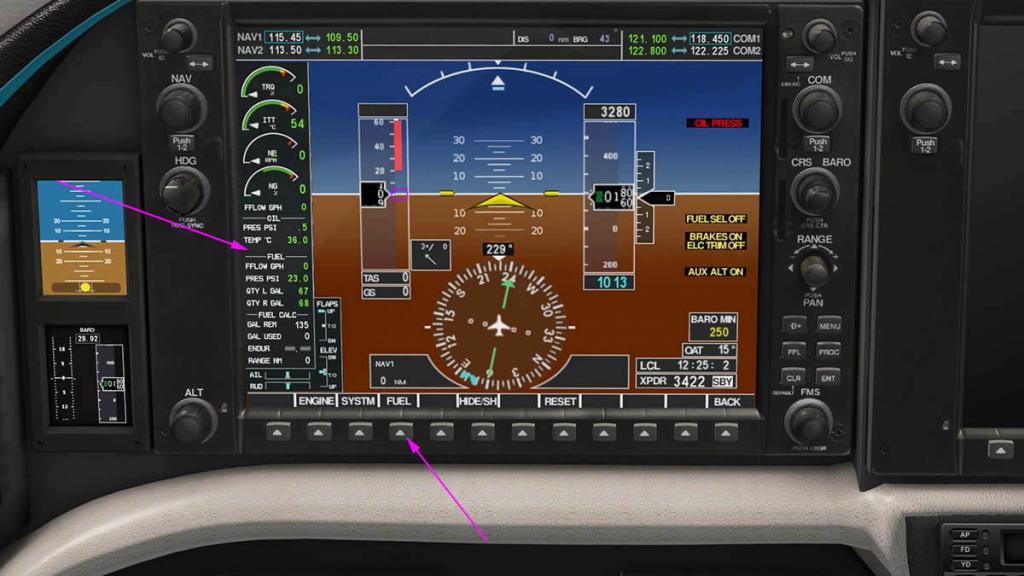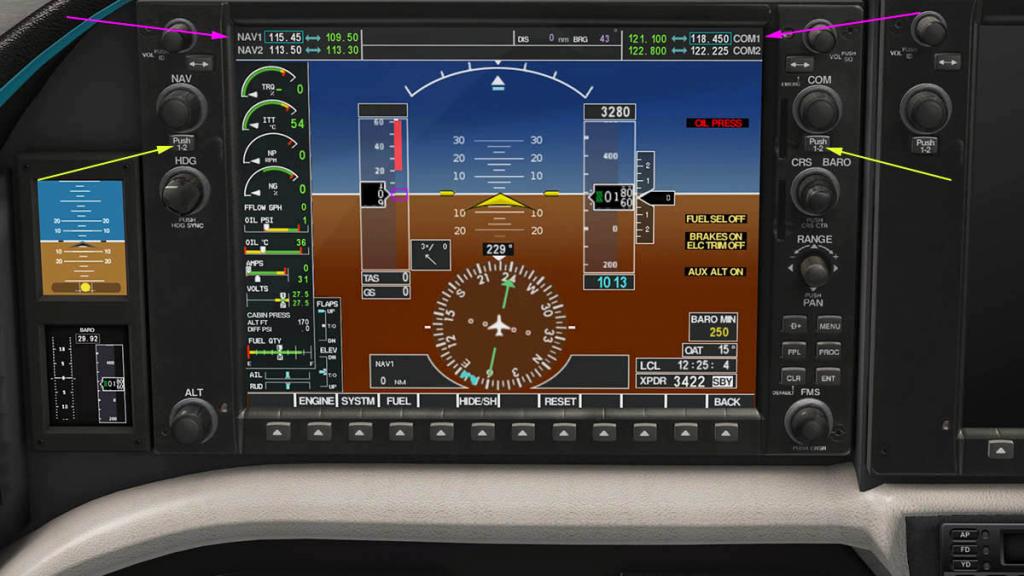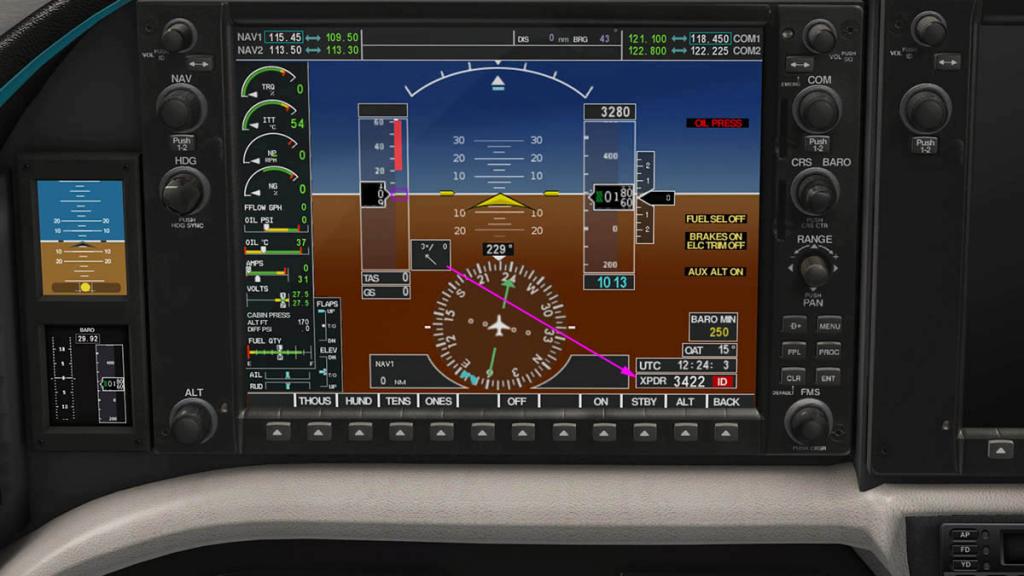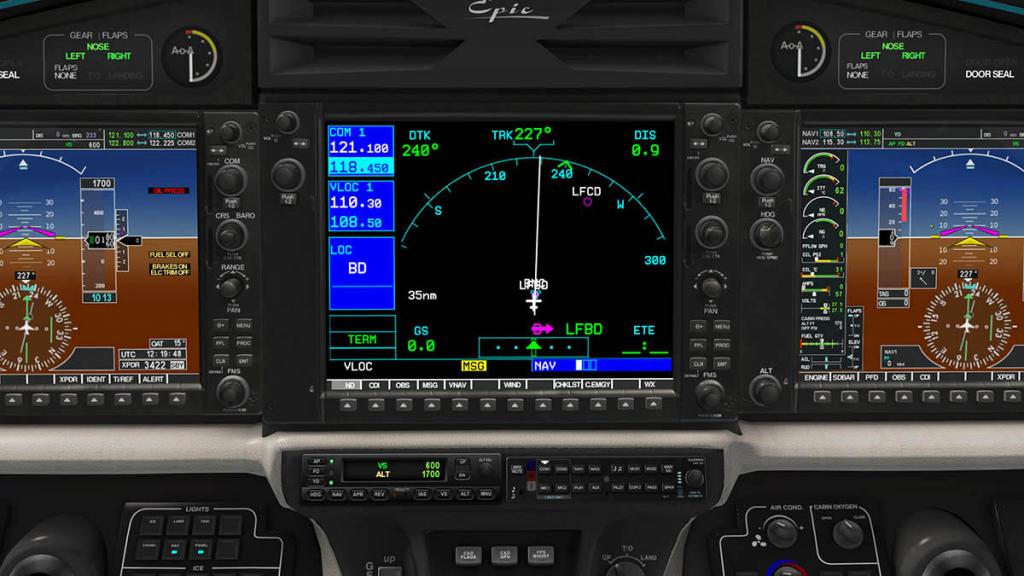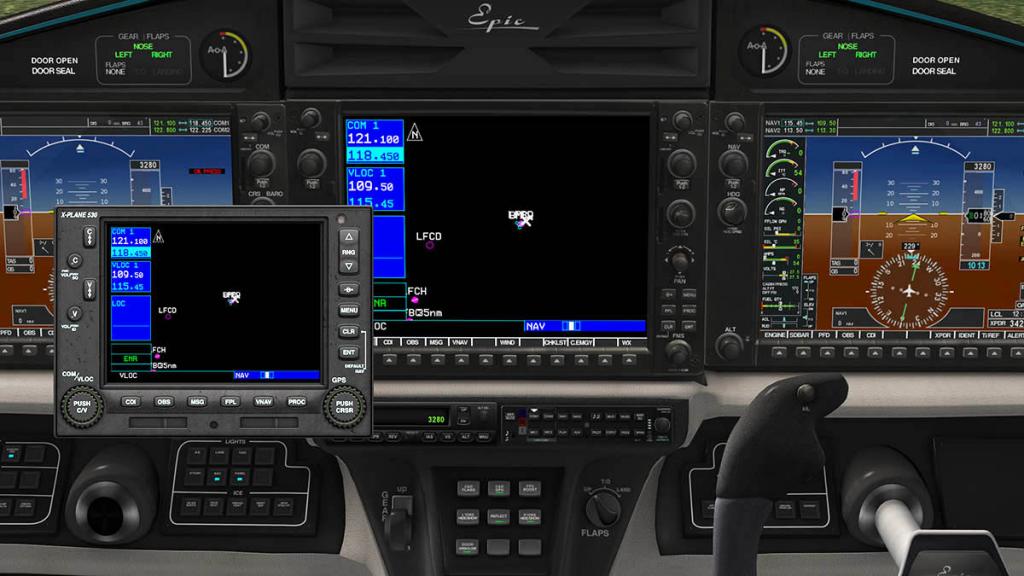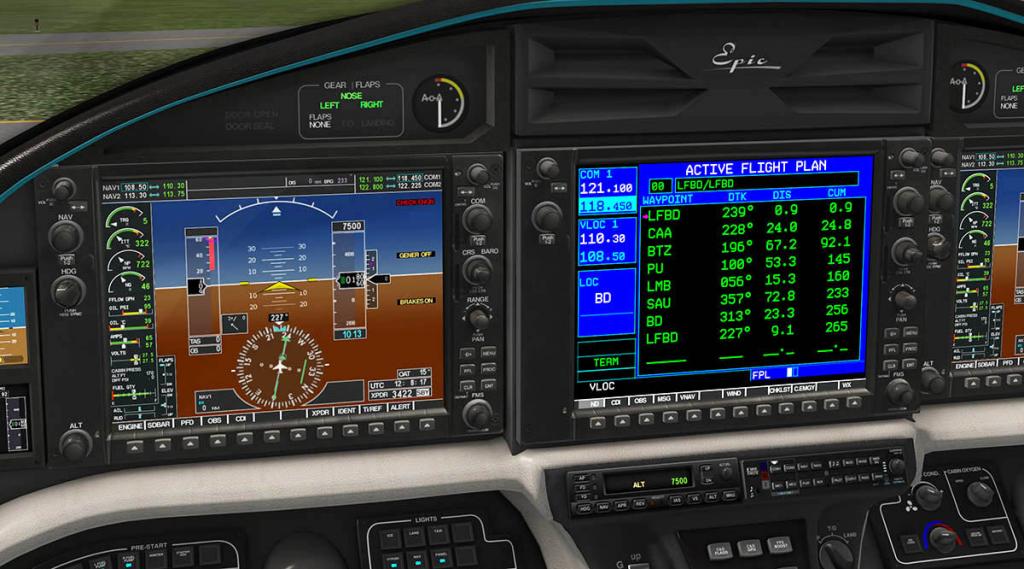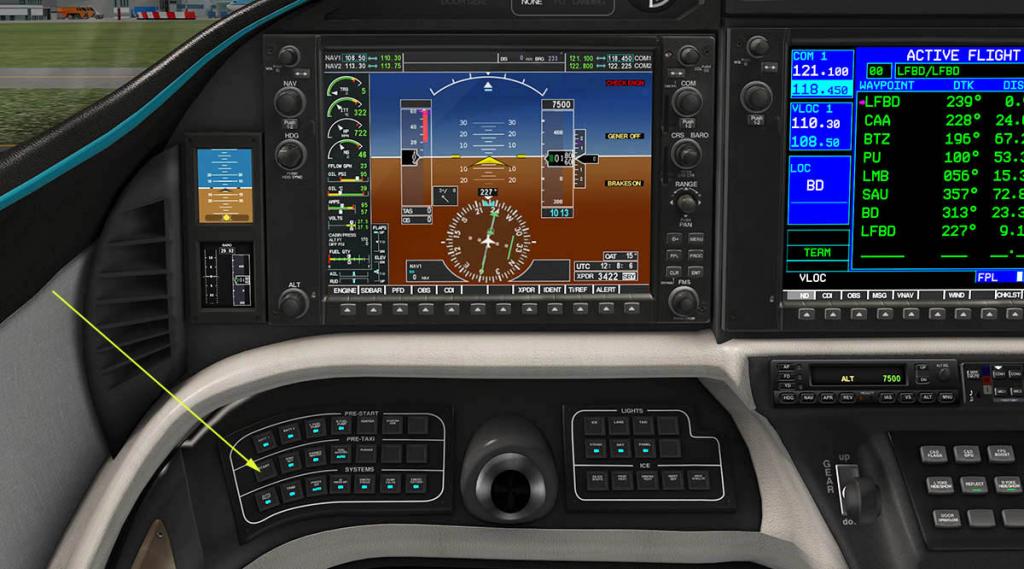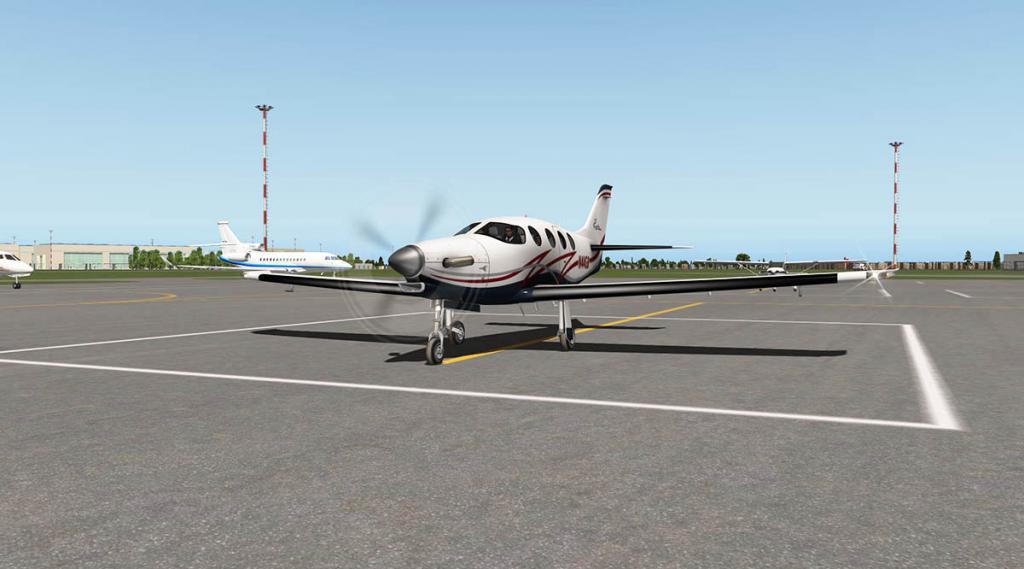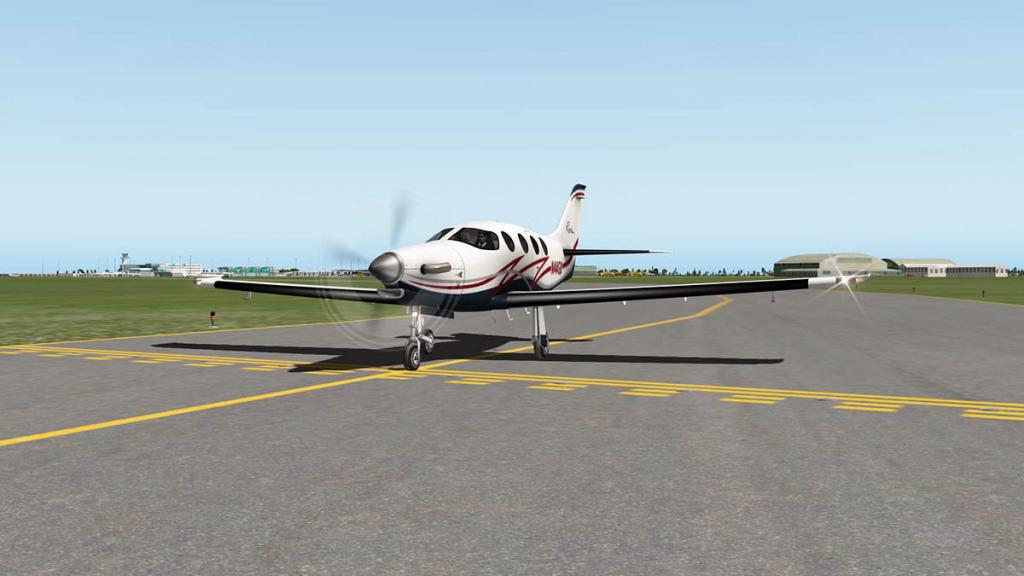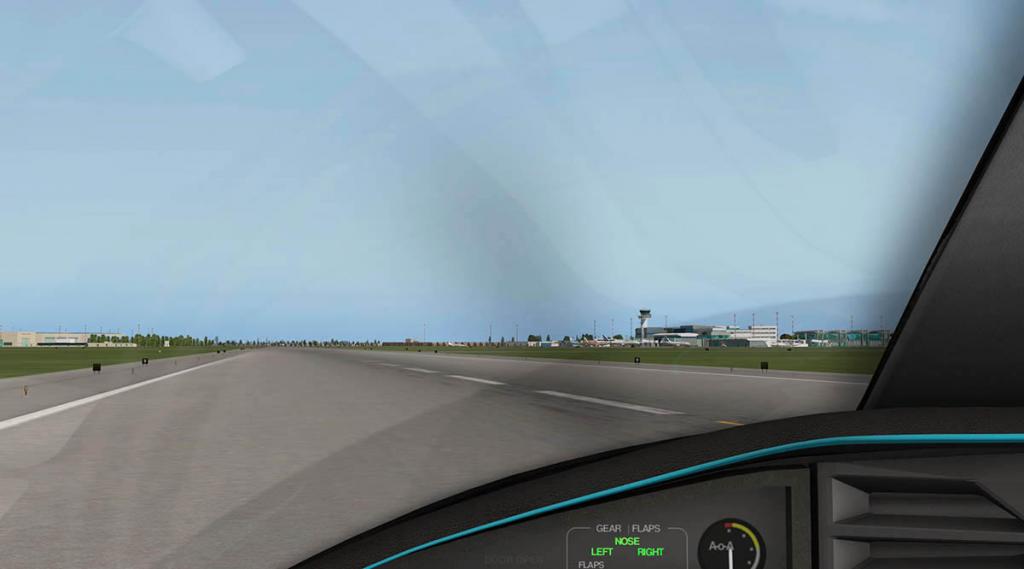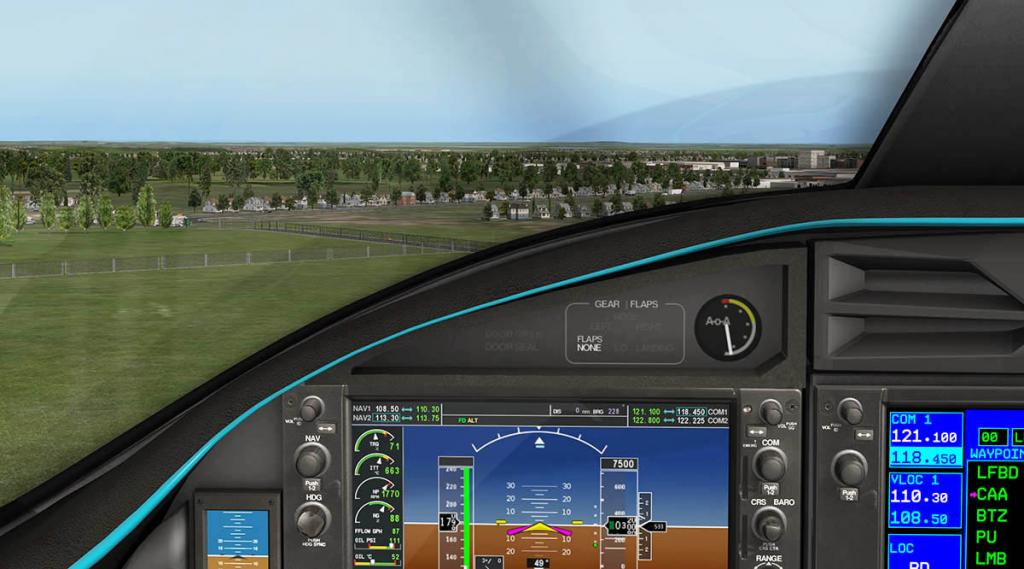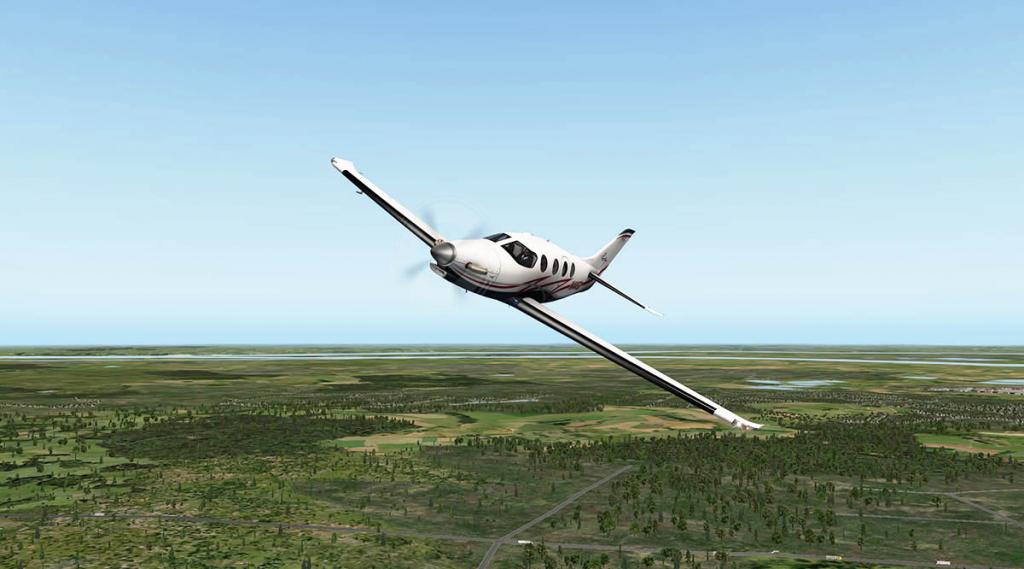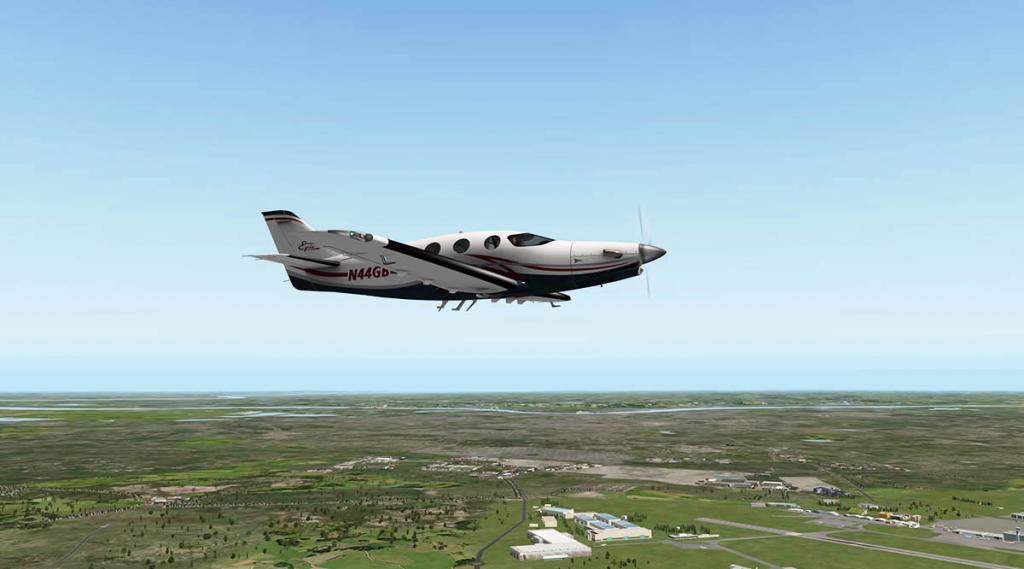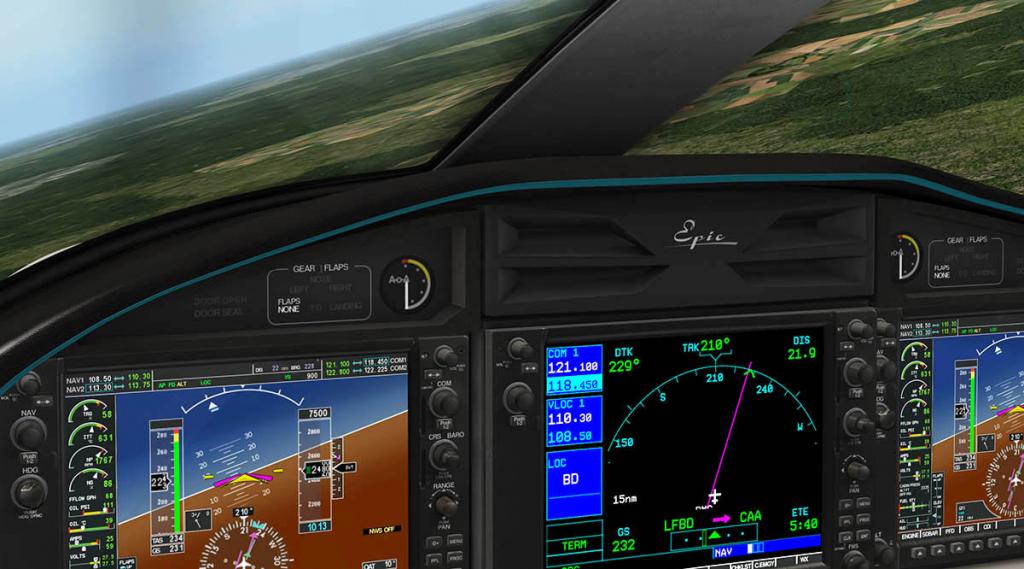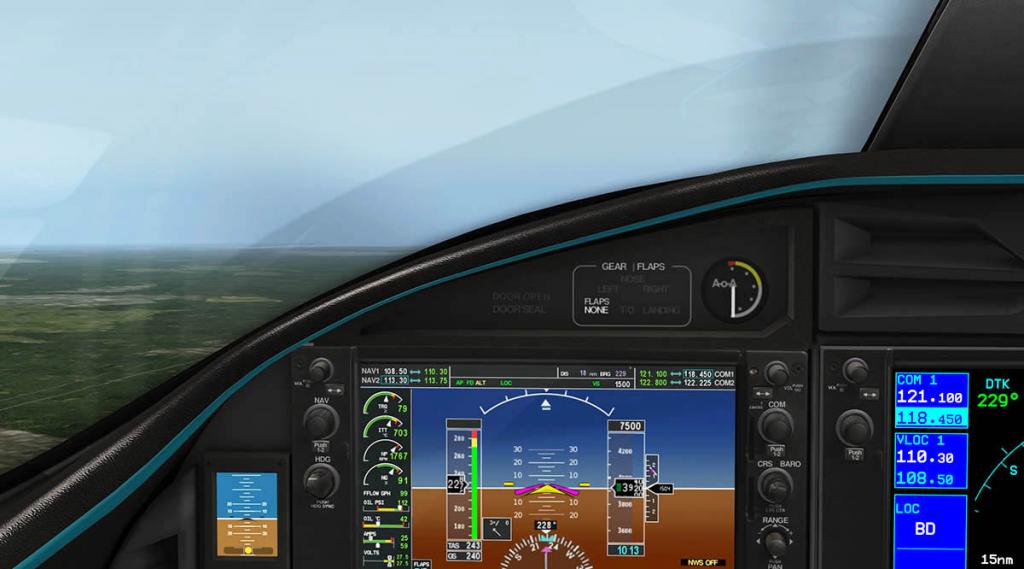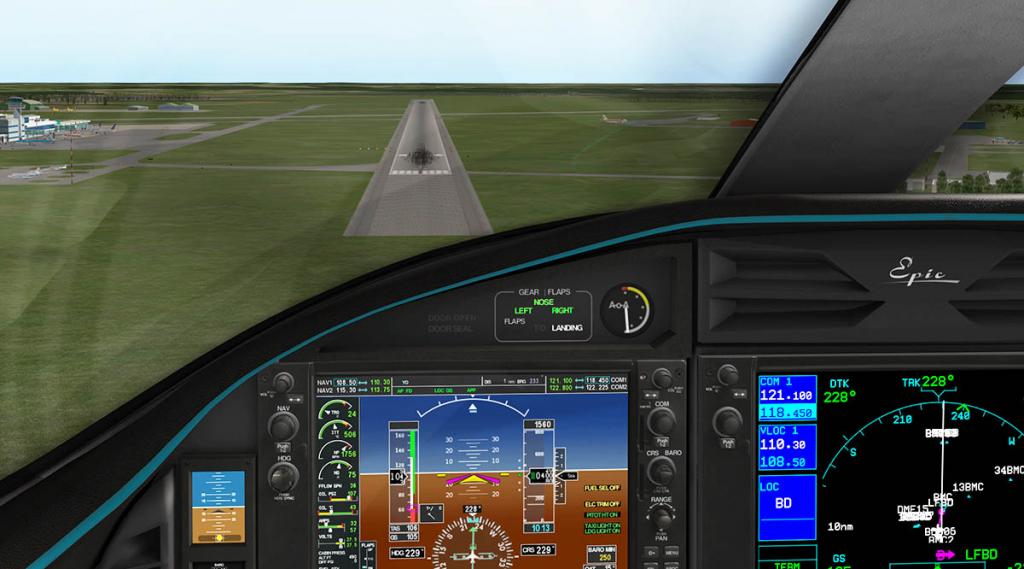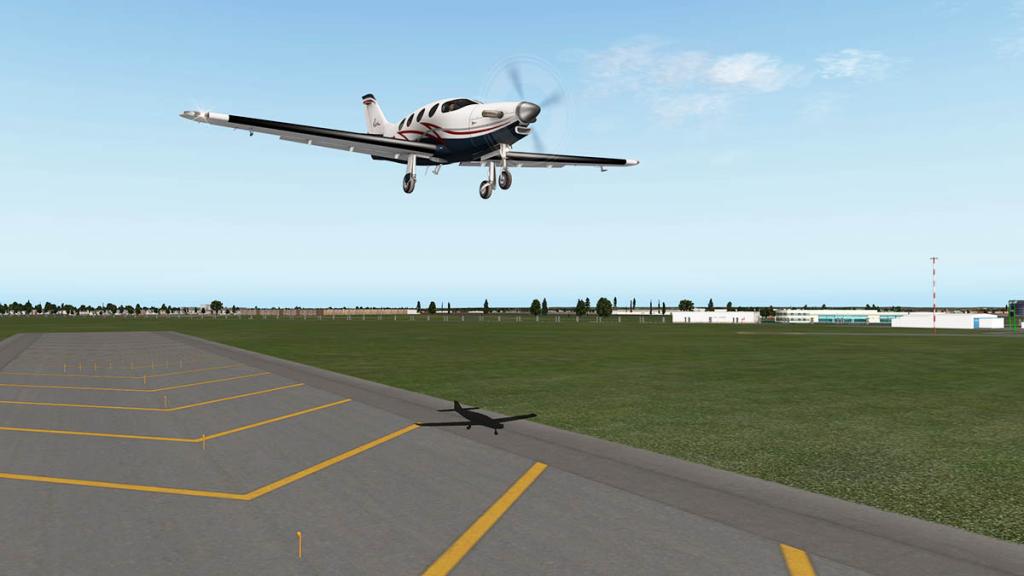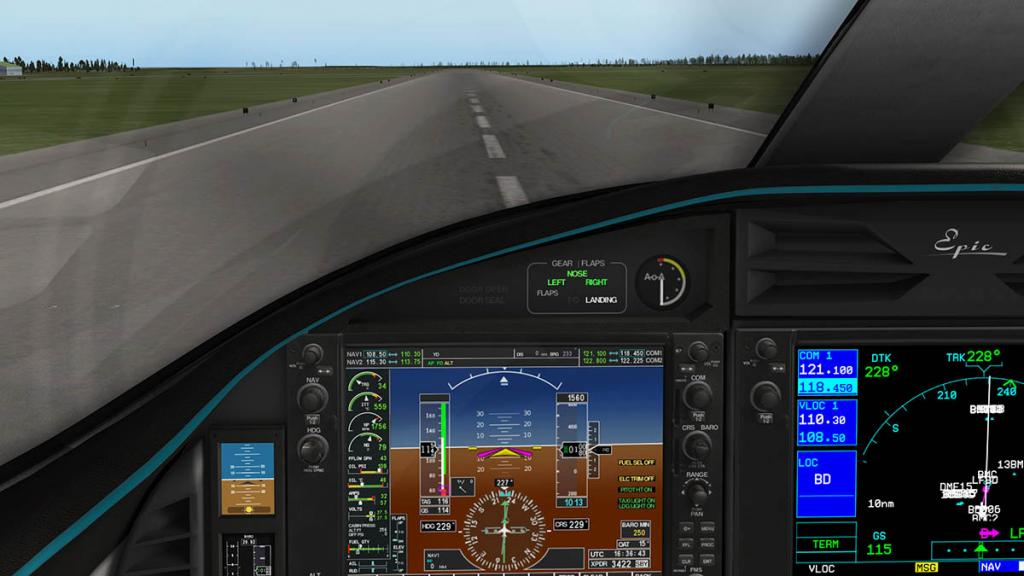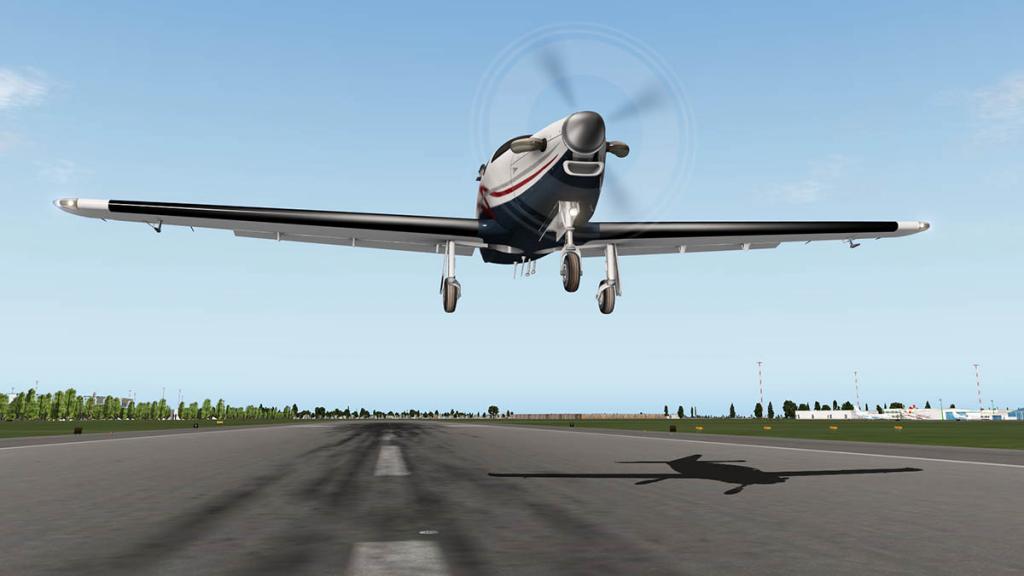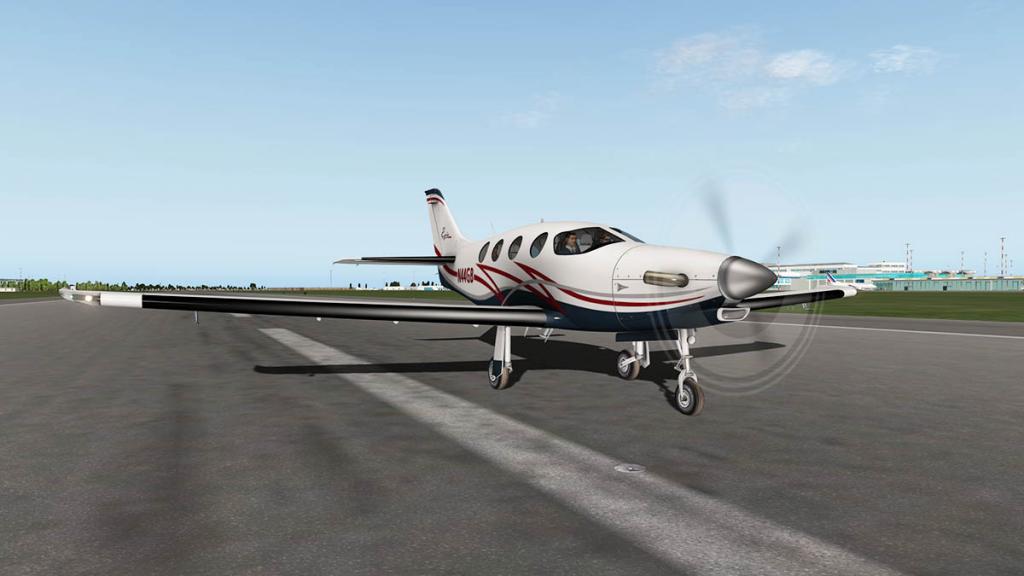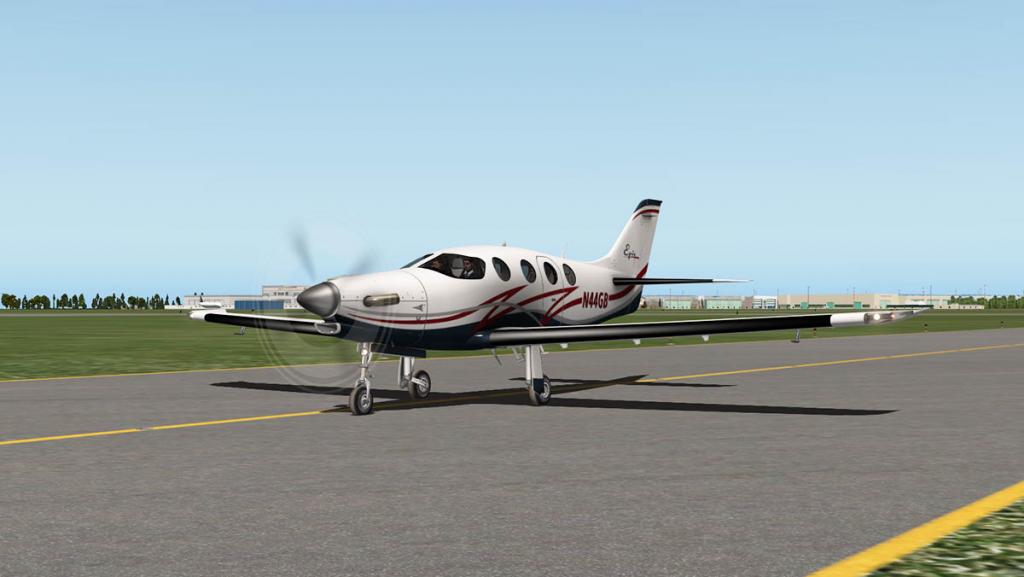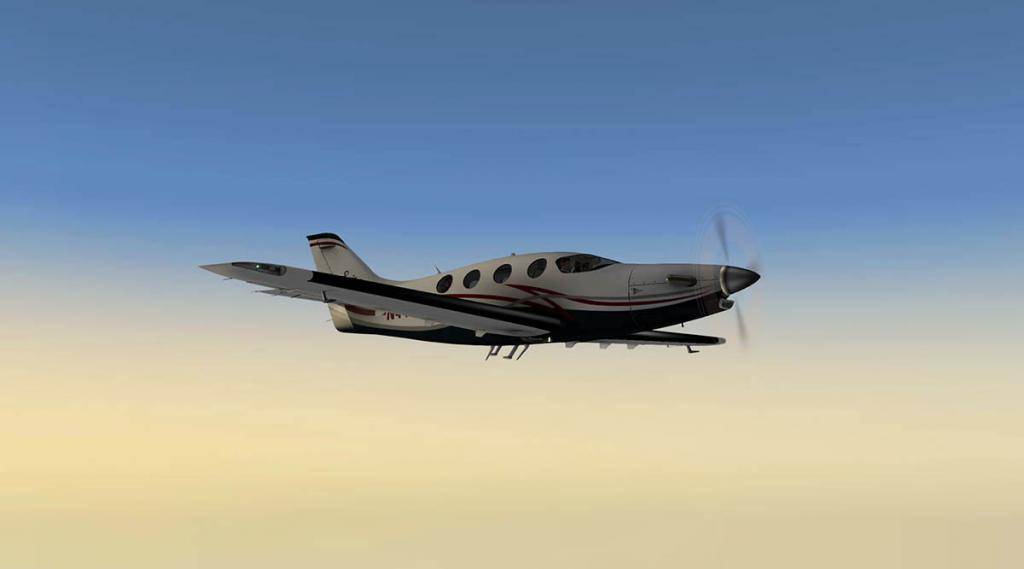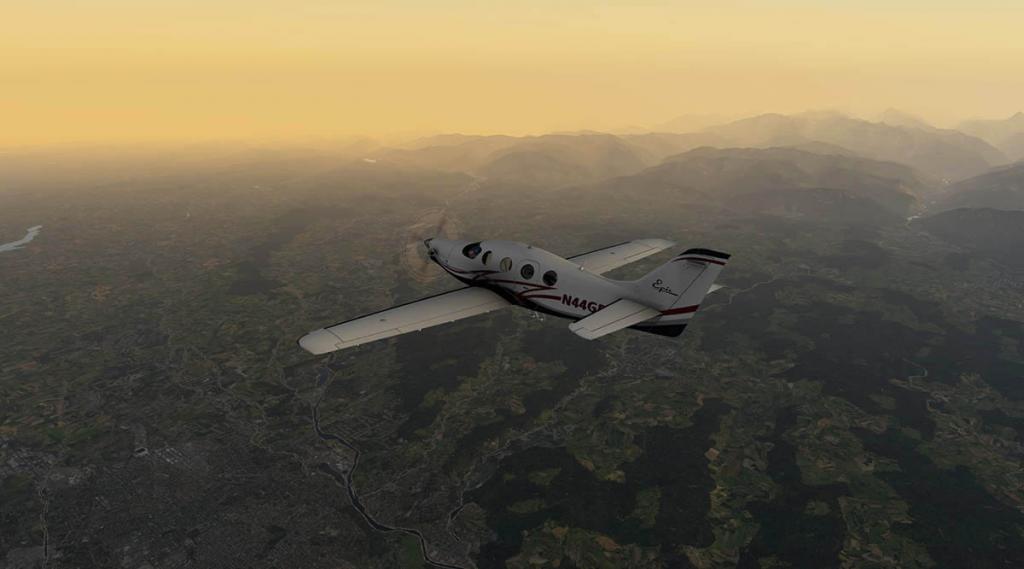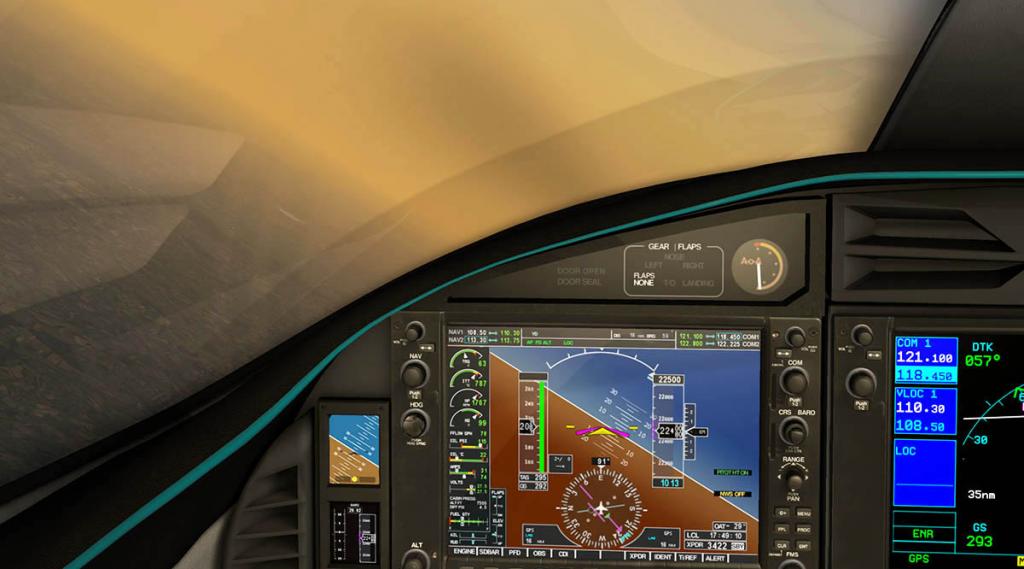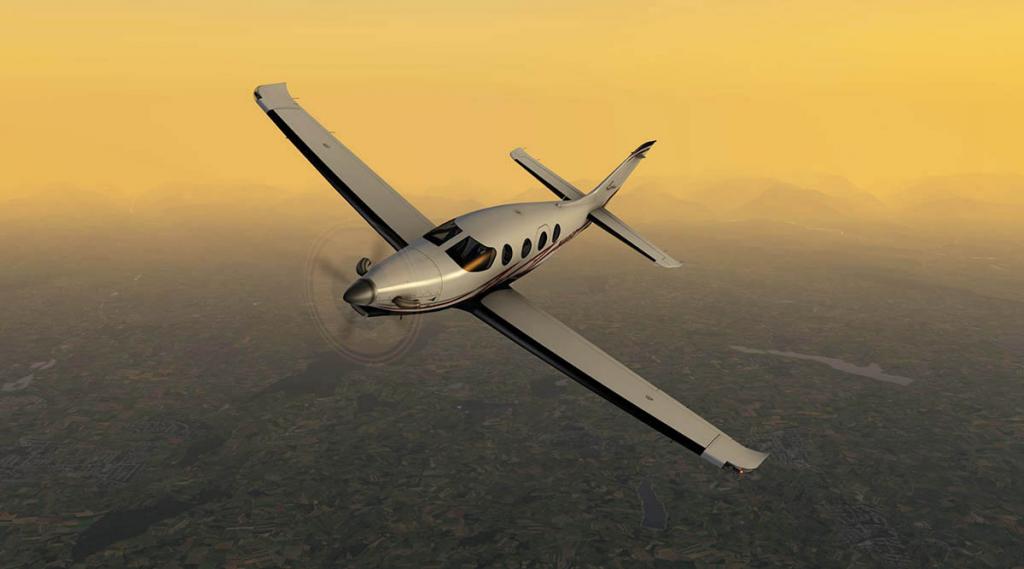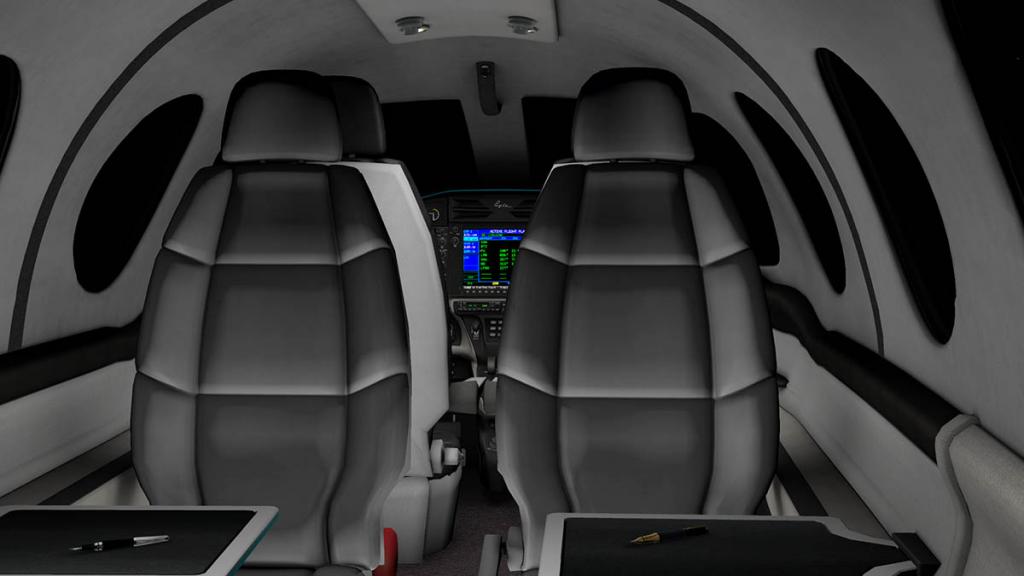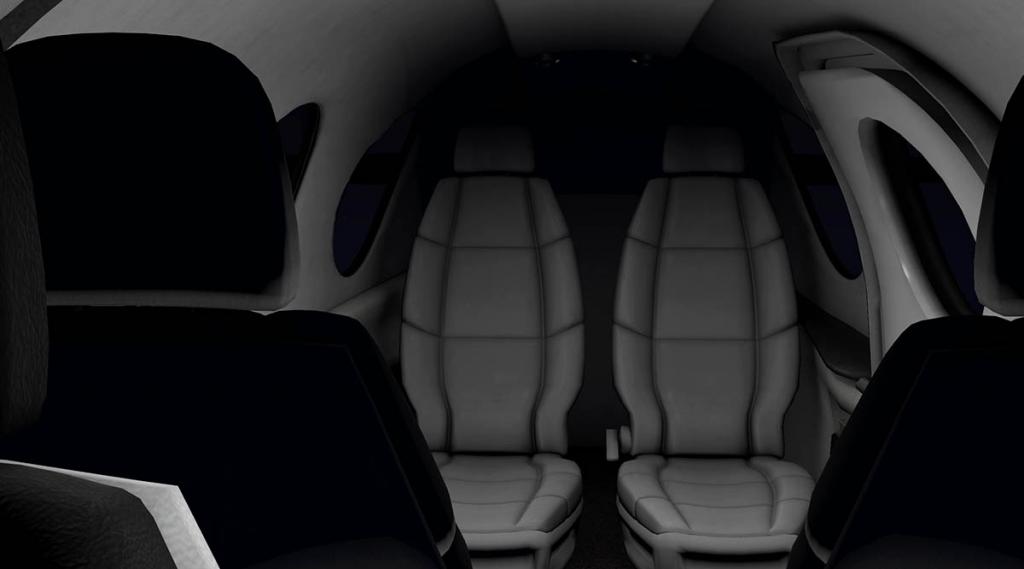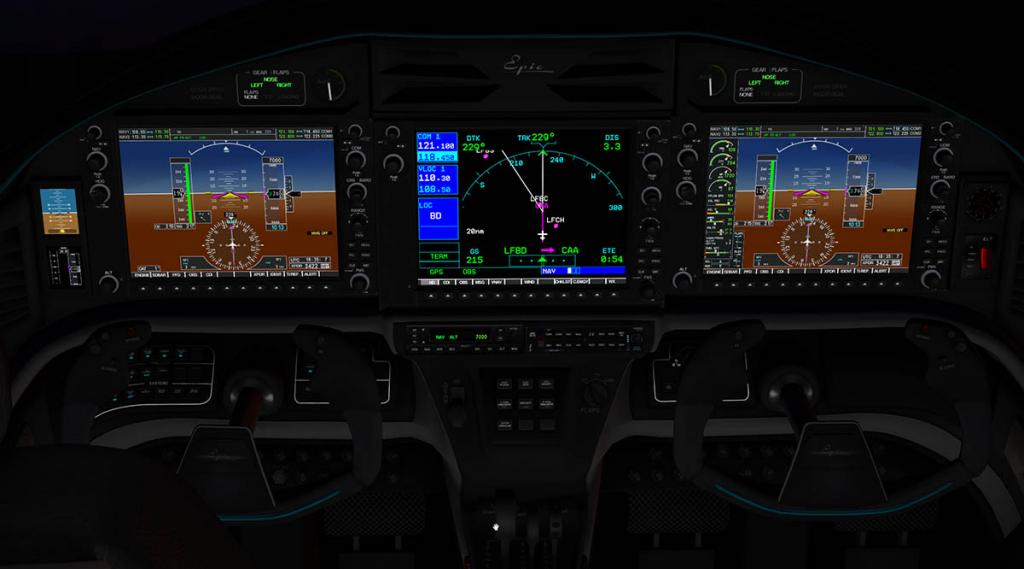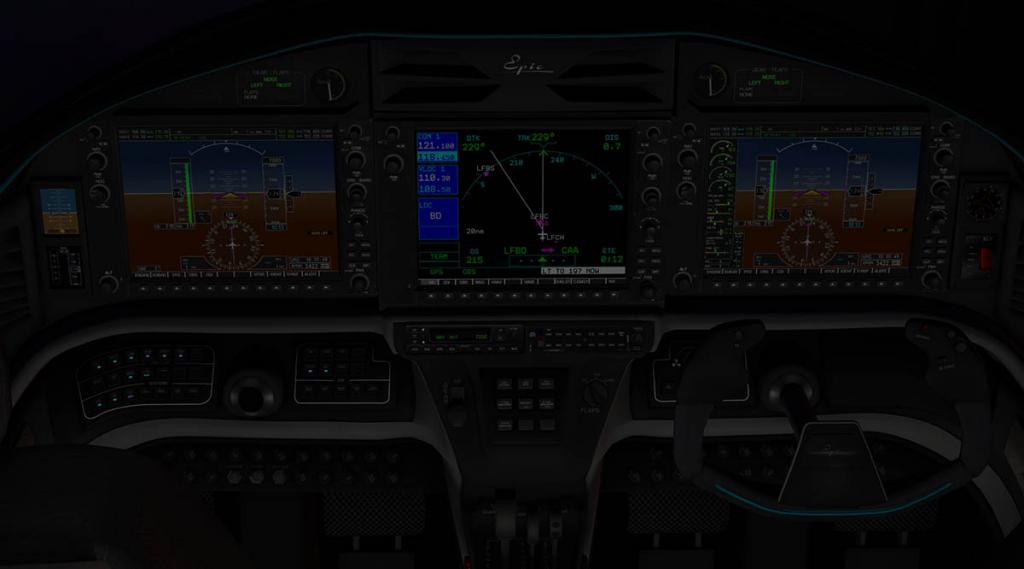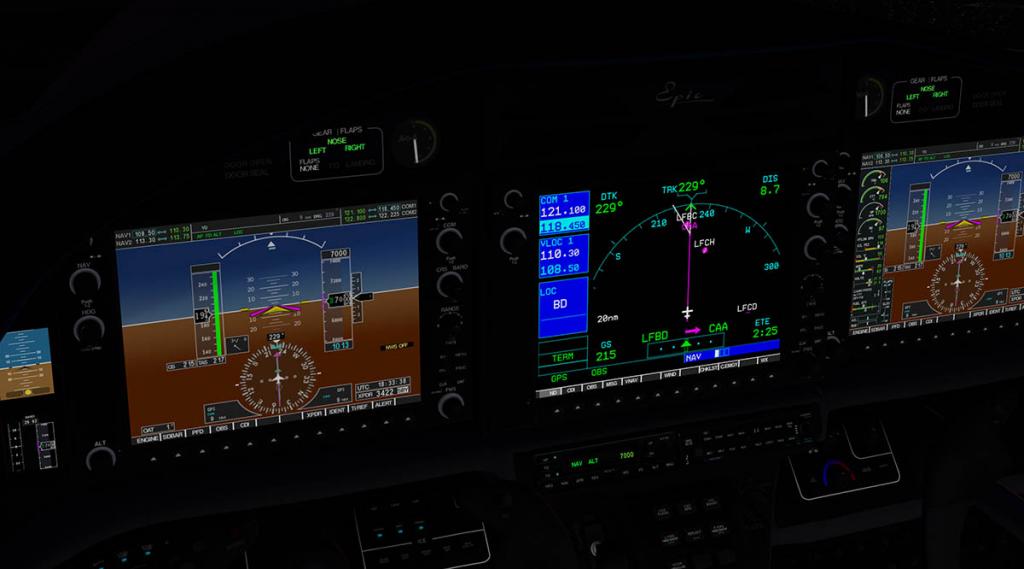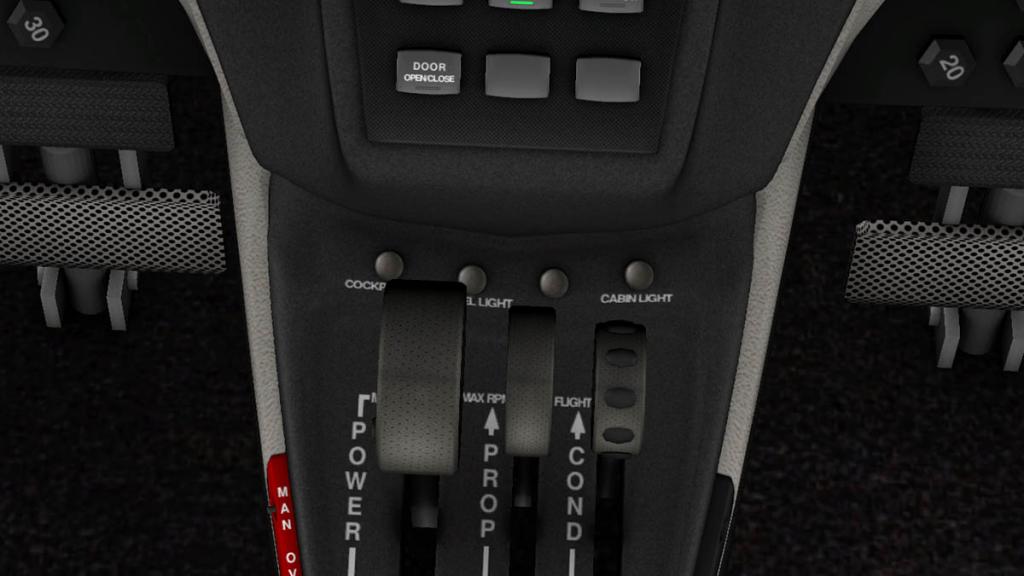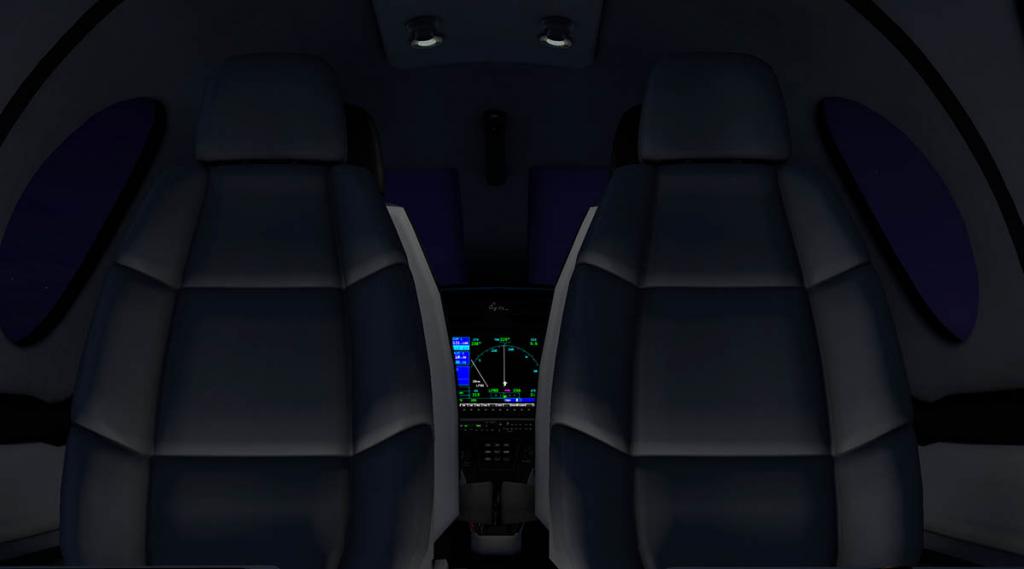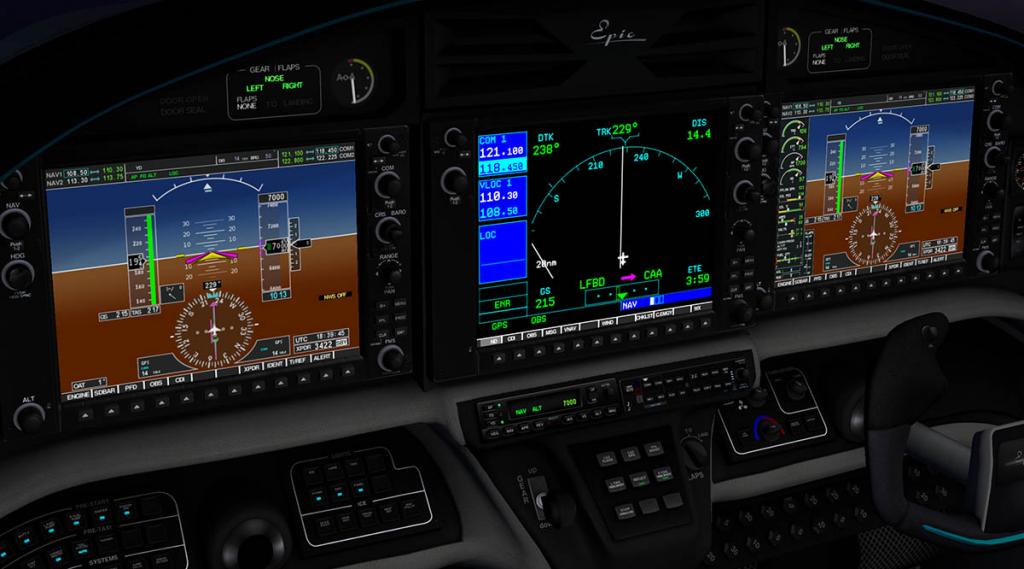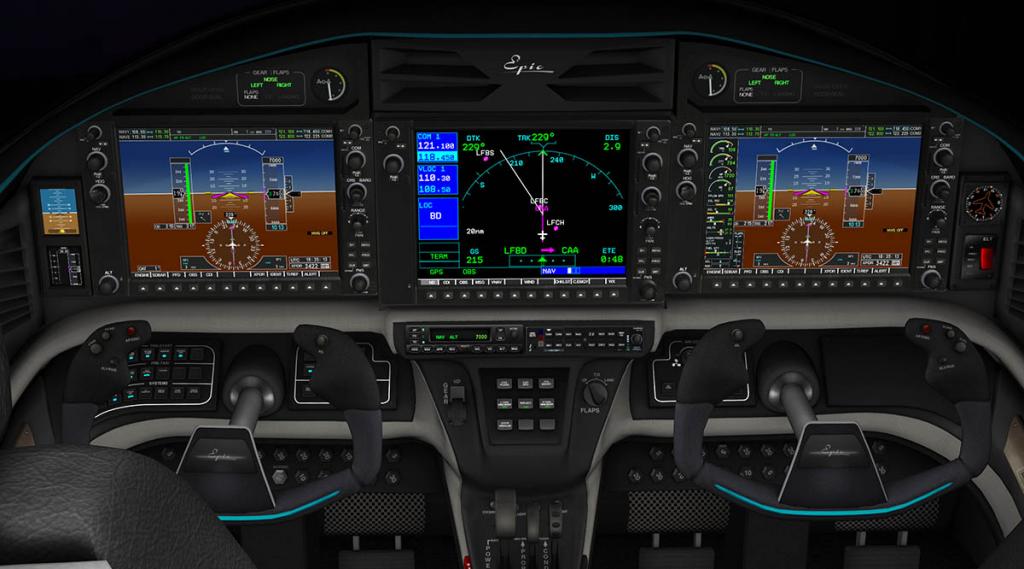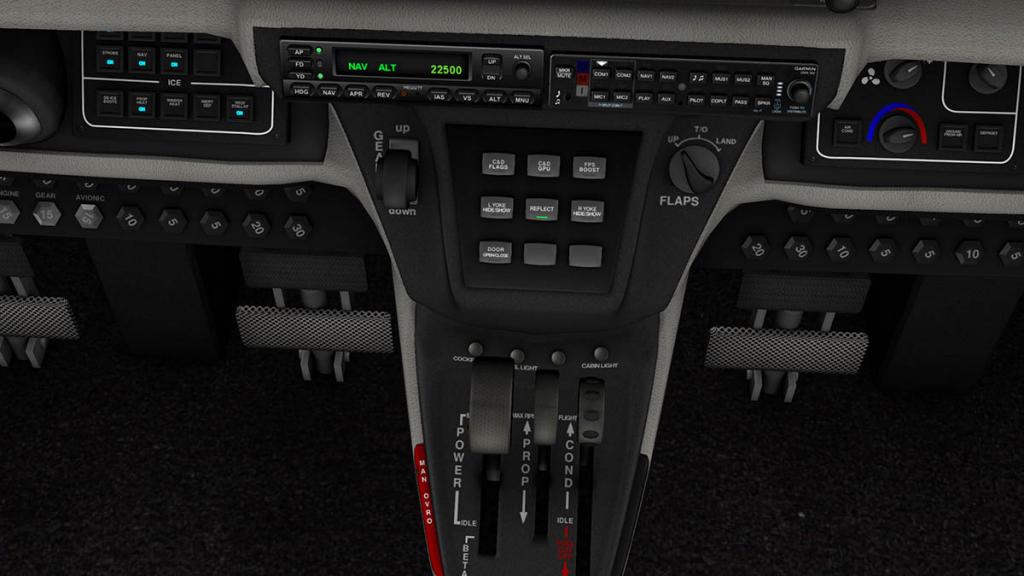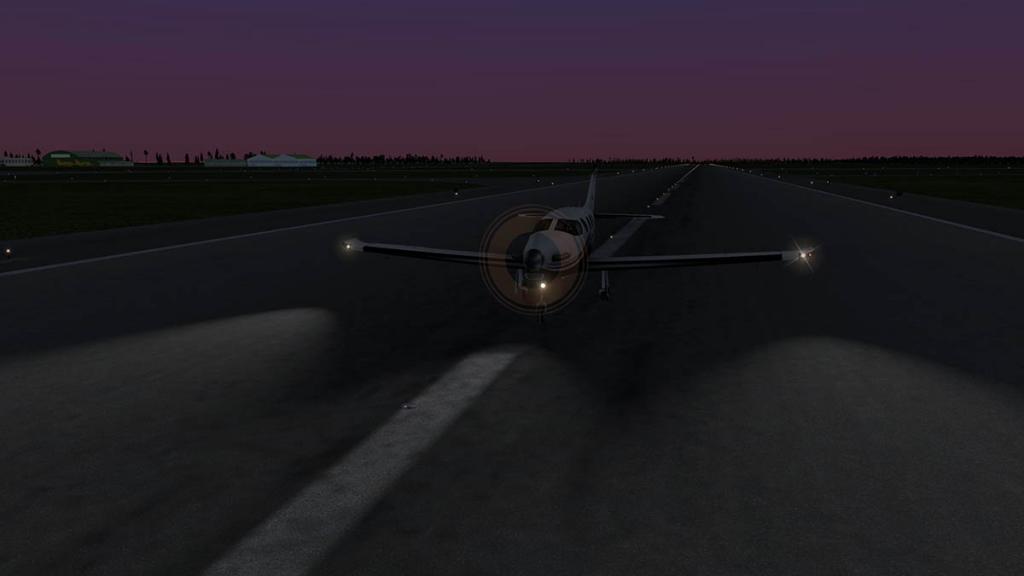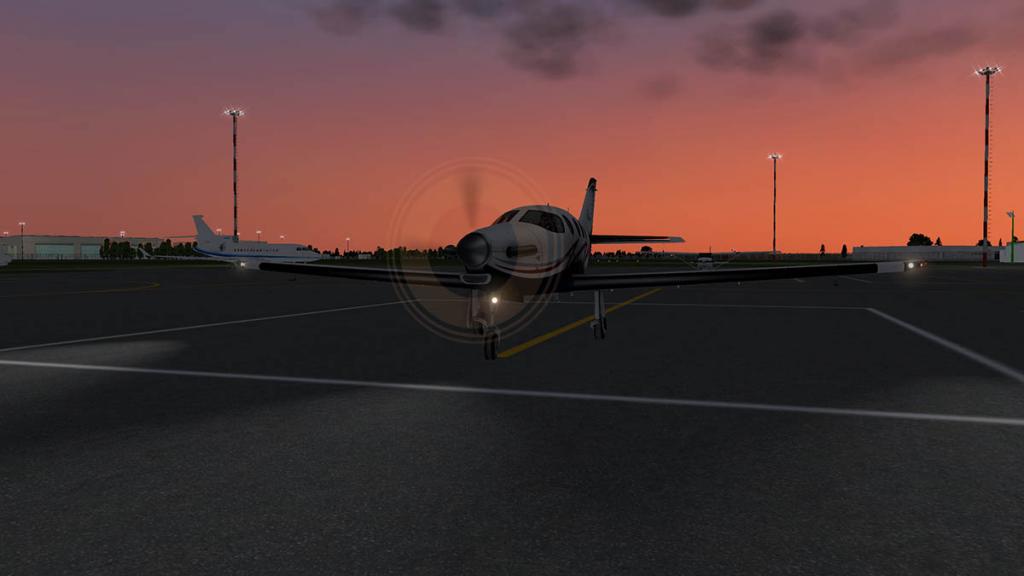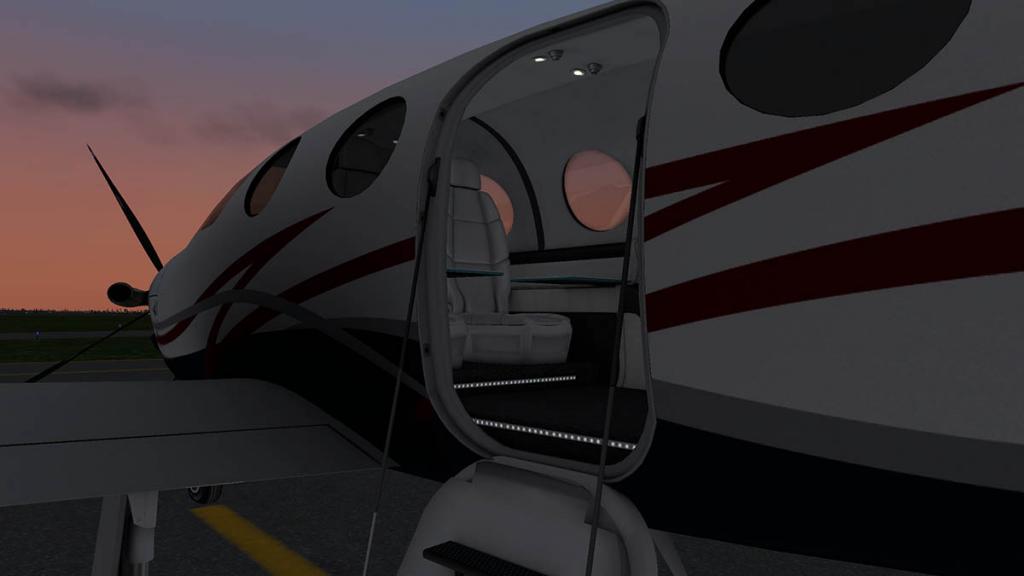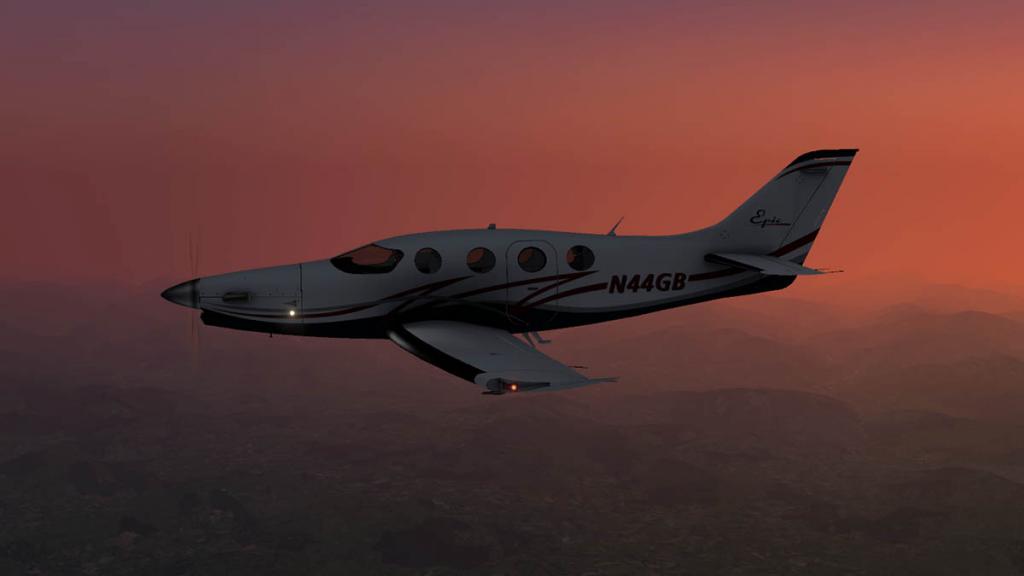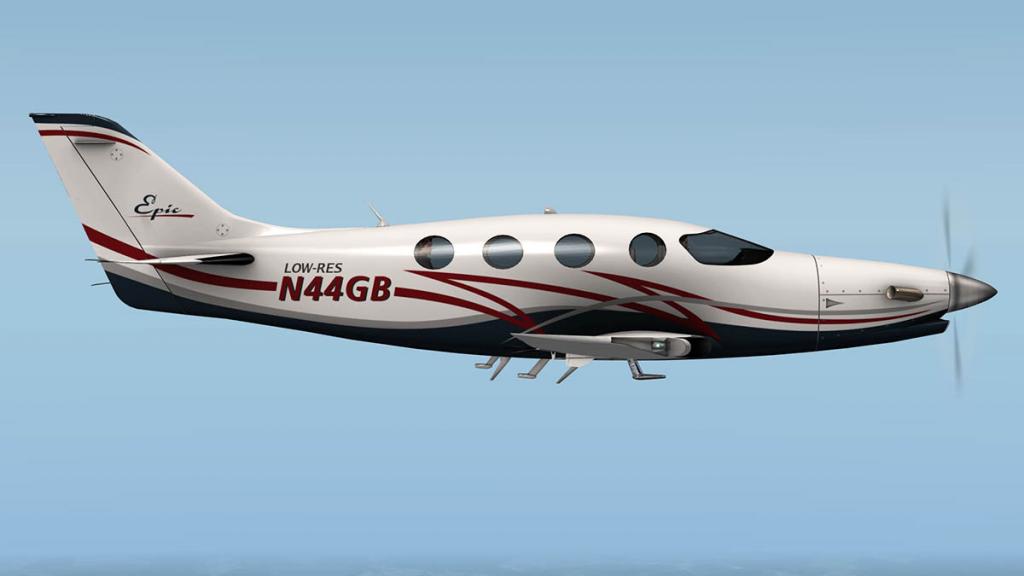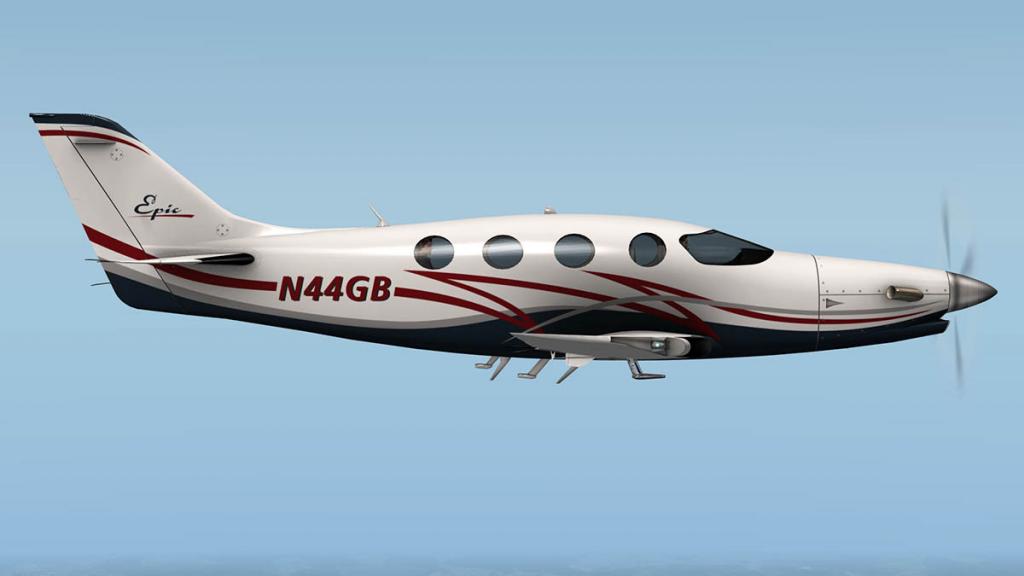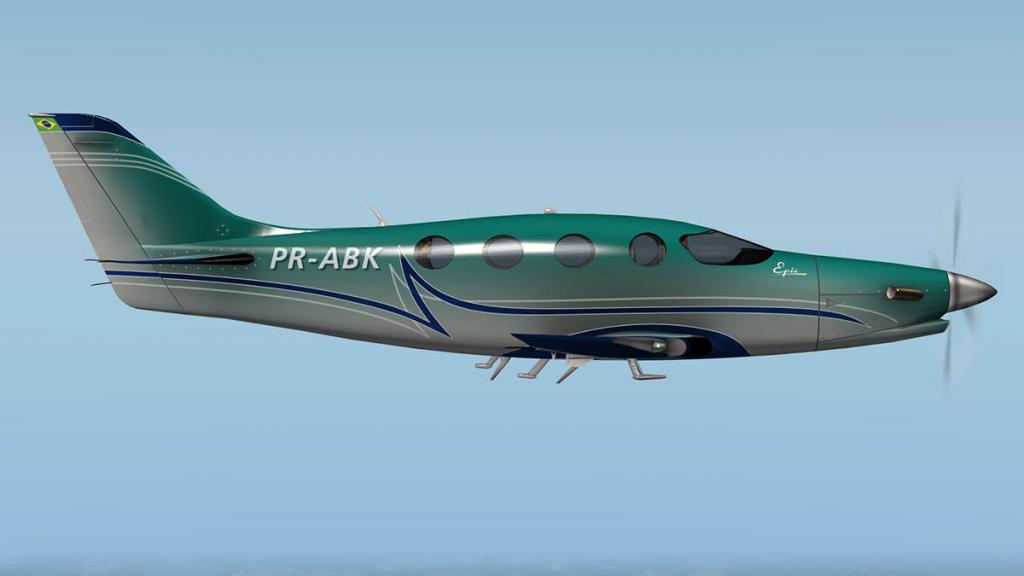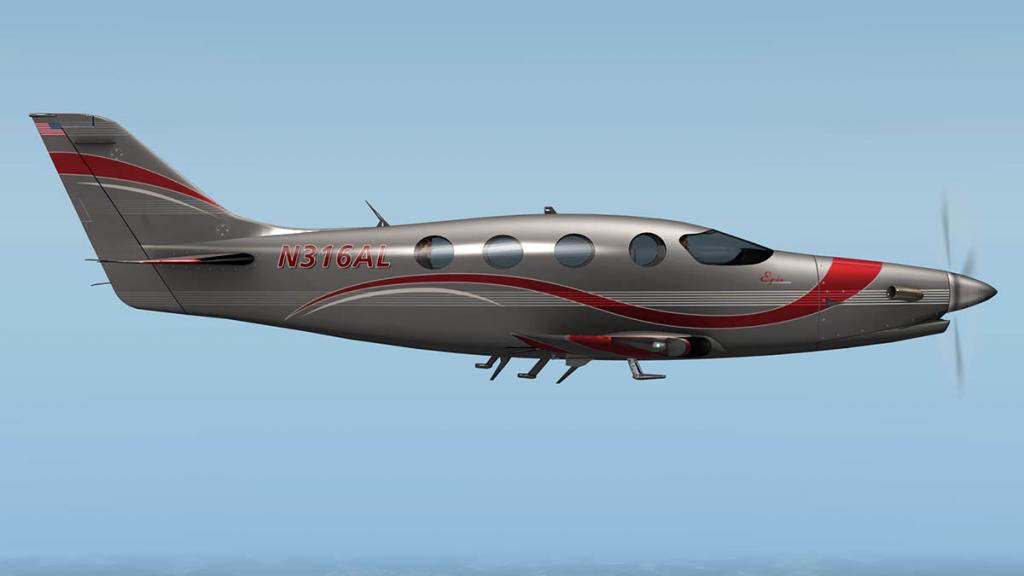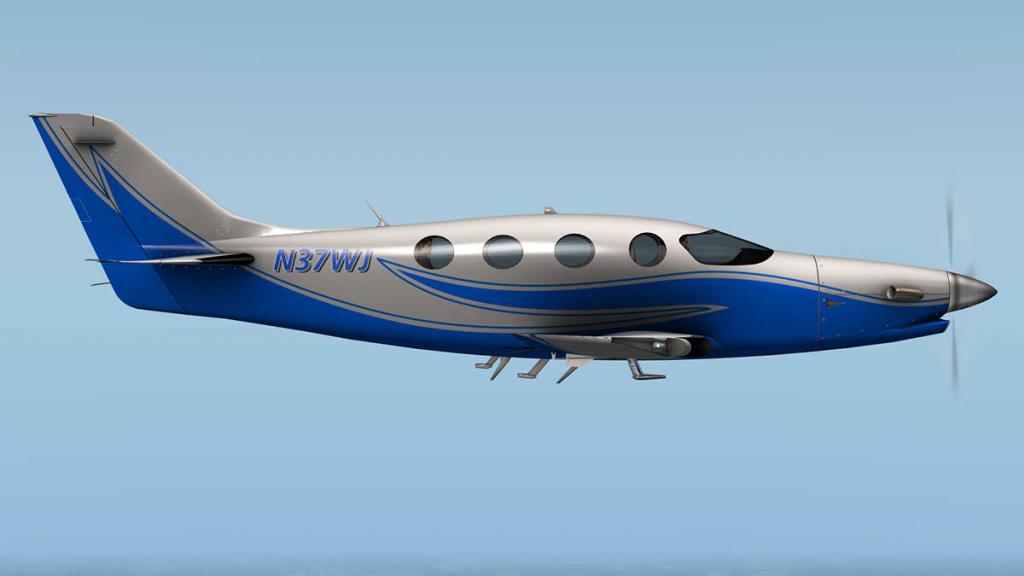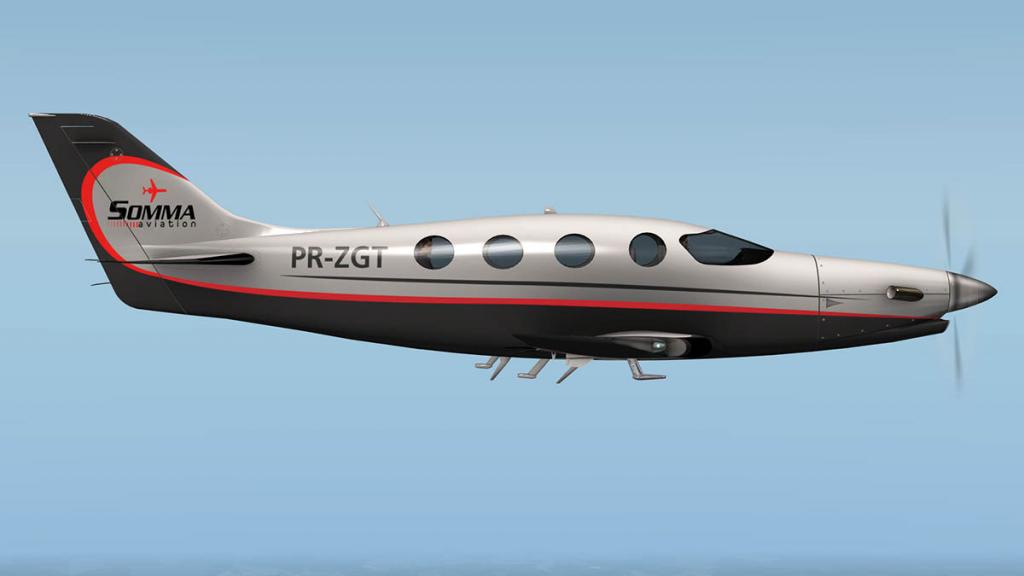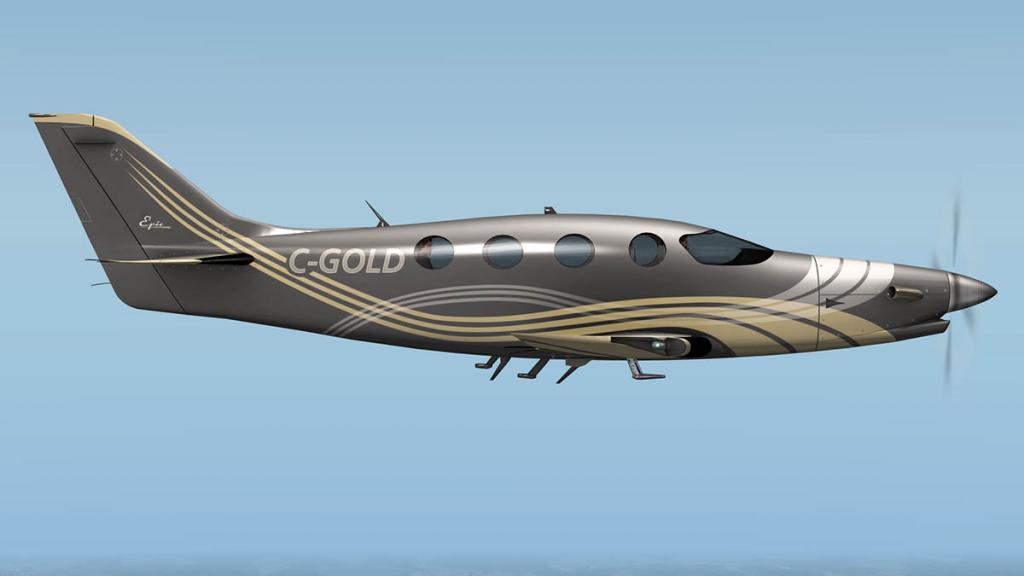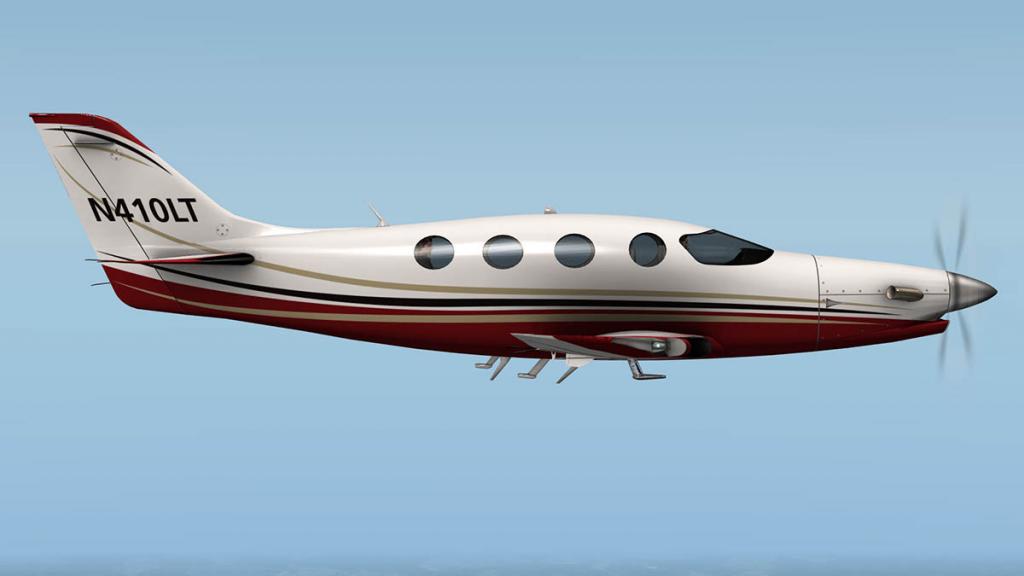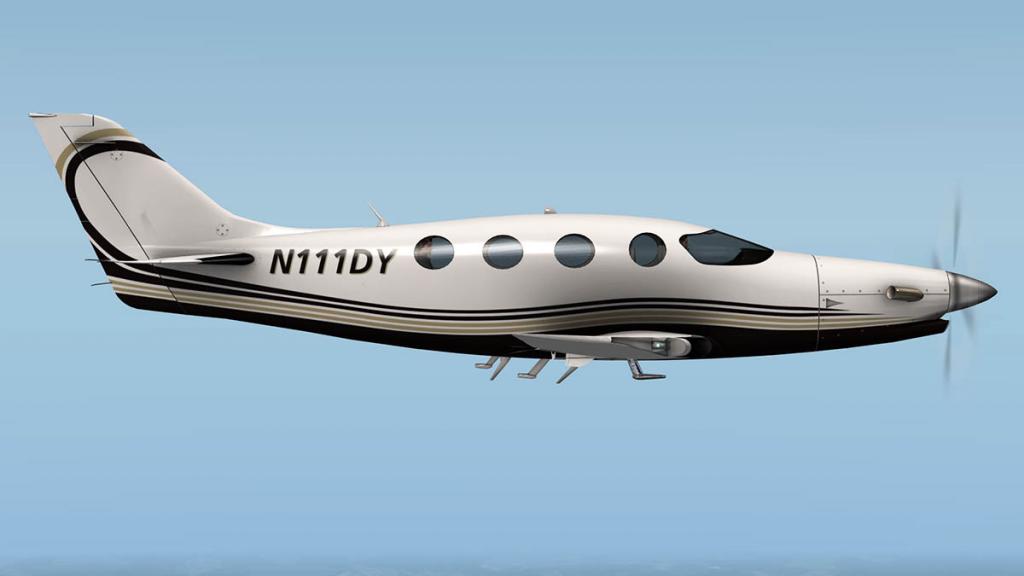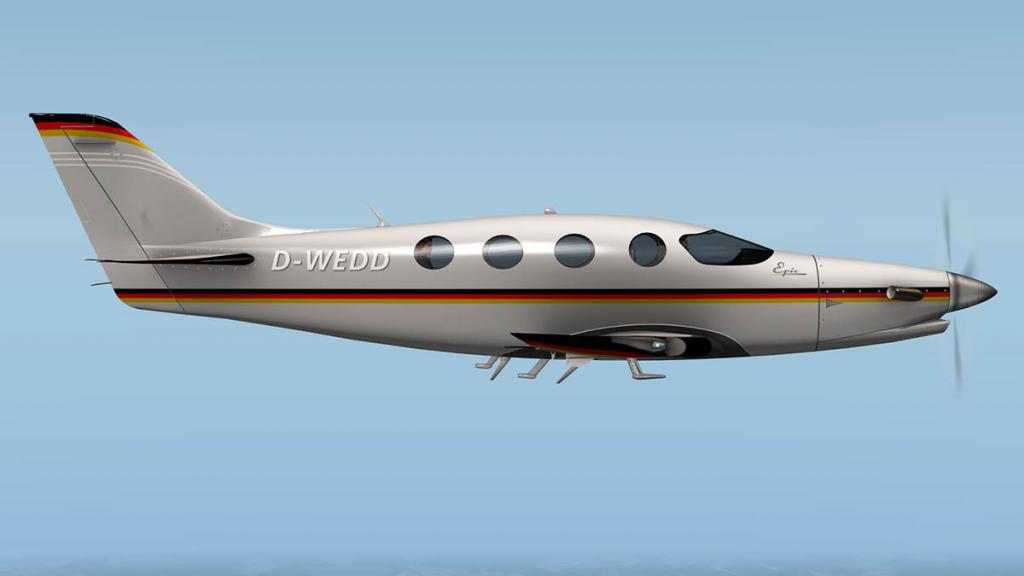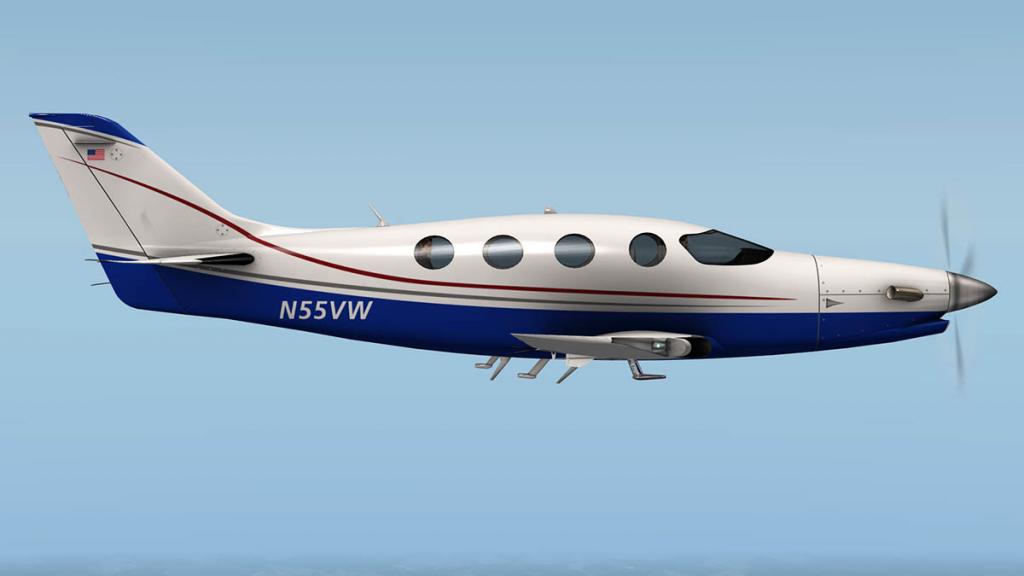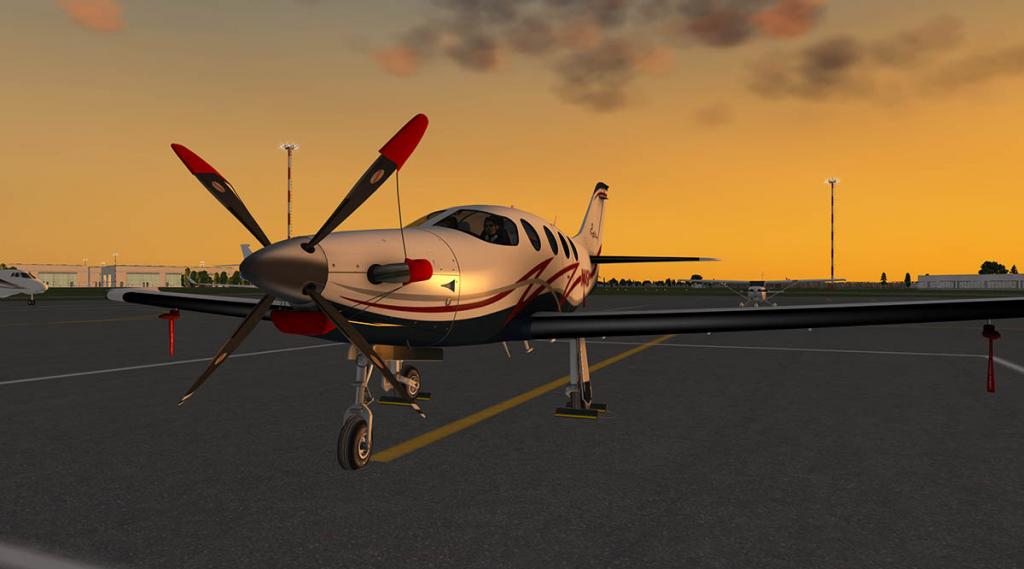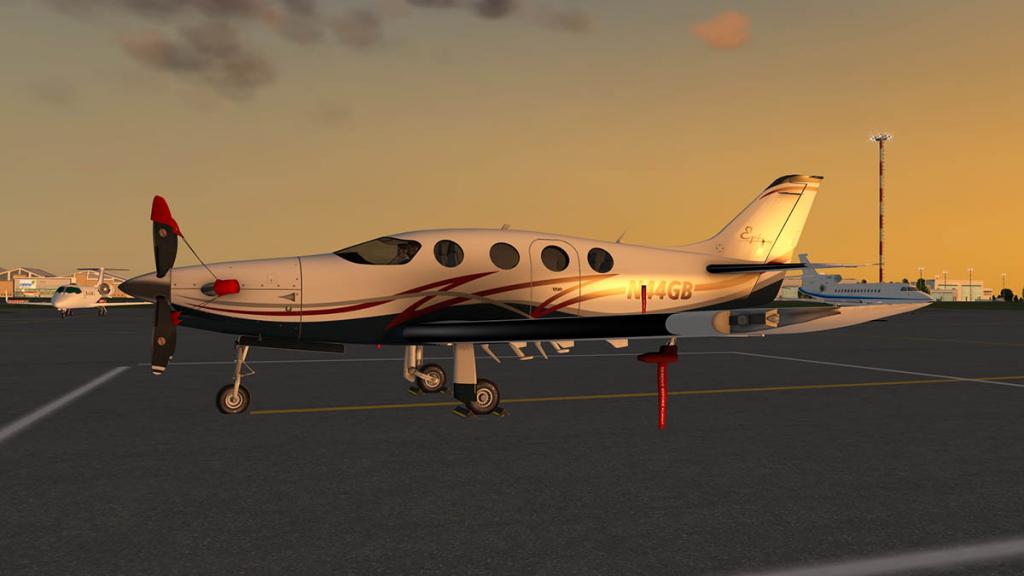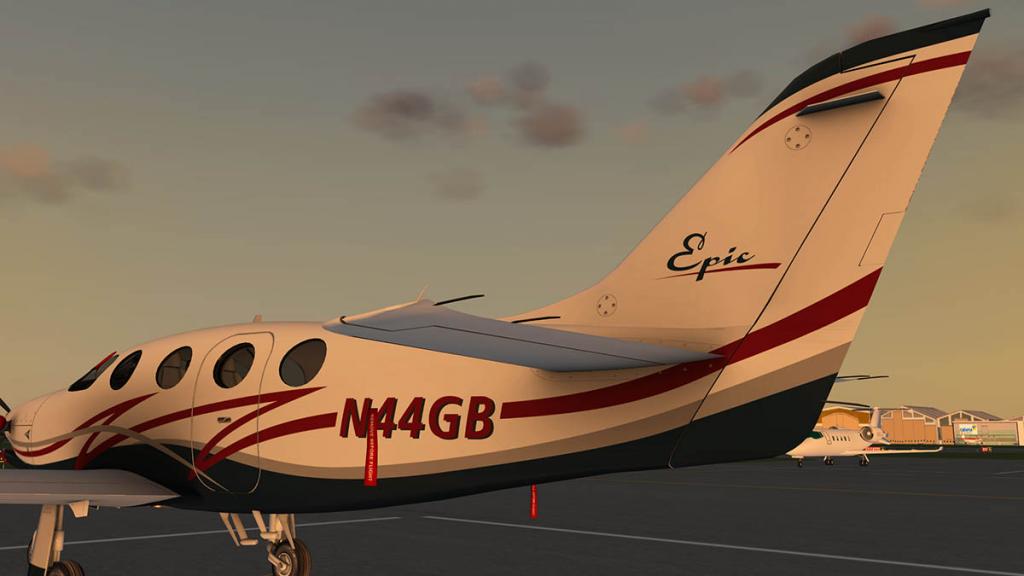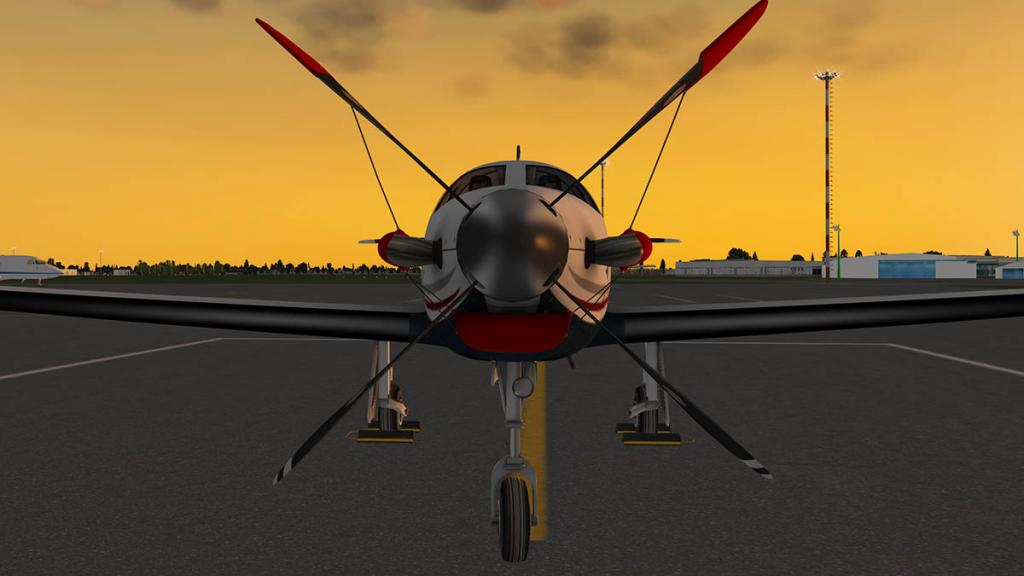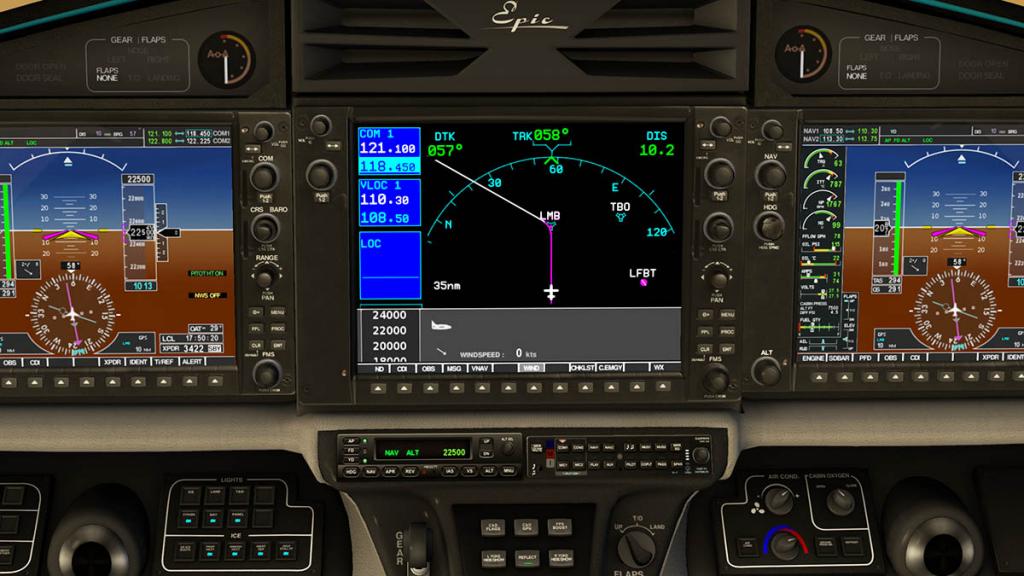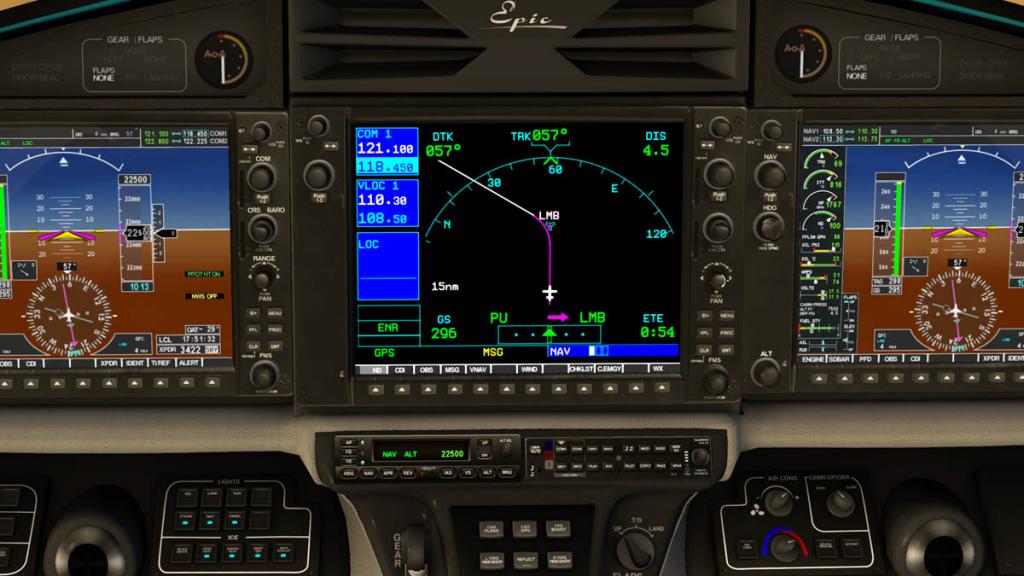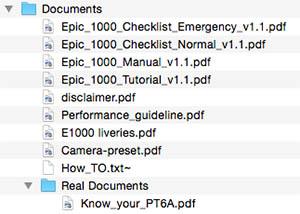Leaderboard
Popular Content
Showing content with the highest reputation on 03/30/15 in all areas
-

Aircraft Review : Epic E1000 by Aerobask
Lord Vader reacted to Stephen for a topic
Aircraft Review : Epic E1000 by Aerobask Welcome to the latest aircraft from Aerobask. This is the Epic E1000 and the largest composite aircraft done by this developer. With the aircraft is still undergoing development and certification expected in late (4Q) 2015. This is a powerful and currently the fastest single-engine turboprop yet built. It uses the 1200 HP Pratt & Whitney PT6A-67A engine installed on a very modern composite aerodynamic airframe to deliver true ‘jet-class’ performance for the price (US$2.75M) of an advanced turboprop. And performance is what this aircraft is all about. The Epic can do a cruise speed of 325 kn (374 mph; 602 km/h), climb at 4,000 ft/min (20 m/s), has a range of 1,650nmi (1,899 mi; 3,056 km) (1385 nmi at maximum cruise speed) and fly at an unbelievable ceiling altitude at 34,000 ft (10,000 m). If you want to go up there with a Boeing 737-800 maxing out behind you then "hey" be my guest... but you have to admit those specifications are very impressive. So X-Plane Reviews headed out to the West Coast of France to Bordeaux–Mérignac Airport to look the aircraft over and see if that performance is real, and can this aircraft really fly alongside the light jets. Epic E1000 by Aerobask Many users are now very familiar with Aerobask's design philosophy. Aircraft like the Twin Star DA-42, Pipistrel Panthera and the Lancair Legacy FG are all very composite designs and significant new generation aircraft. And the Epic E1000 certainly follows on in that vein, the only slight difference is this is not a light spec aircraft here, but a more larger General Aviation/Executive design. And for molding those smooth sleek almost dolphin shaped designs you won't find any one who can do this better. The Epic is one nice looking aircraft. These aircraft are very hard to dissect, because they are not built around a frame or modules, but are formed as a one piece moldings with the smaller components making up the whole. So they can be unnaturally smooth and very hard to make interesting. Aerobask is one developer however who can bring these aircraft to some distinction, so the design here is excellent. The aircraft its on a tri-cycle landing gear and they are quite tall and sits the aircraft well off the ground, the rear wheels are a trailing design and very well designed here. Externally the aircraft is excellent and comes in High-Res textures of 4K. There is no window tab menus, but a menu panel in the center of the panel that gives you various options internally and externally. Top row is the static elements (tags, chocks and covers) and a portable GPU (Ground Power Unit) which is very nice. Third button along is the "FPS Boost" which helps in your framerate if you are marginal by removing the seats and other various no-essential item. I found the aircraft very framerate friendly, overly so... So your computer would have to be pretty average to have to use this. Second row of buttons covers the panel in left and right yokes removal and the excellent window and panel reflections, bottom row single button is to open or close the single rear passenger door. The panel is dominated by two left and right Garmin G900 Primary Flight Display (PFD) displays, the center display (MFD) is another on the surface an G900 display but here it is a modified X-Plane GNS530 unit instead. Note these G900's are only an accurate representation of a real G900, and not an exact replica of the instrument but they are very good never the less for that. Lower panels include the main switch gear on the right (yoke removed) center is an excellent MEGGiTT autopilot and Garmin GMA350 radio unit, with below a small pedestal unit with a throttle, propeller (feather) and condition levers (throttle has power "Max/Idle" settings and a "Beta" reverse thrust setting). The cockpit, panel and rear cabin lighting adjustment knobs? are very small and hard to see behind the levers. Left lower panel is just the climate and oxygen controls. The aircraft has a unique way of switching on the various systems... the three rows of buttons are set out to be used at the various points of getting the aircraft ready for flight and in order. Top row is the "Pre-Start" Second row is the "Pre-Taxi" and the lower row is the "Systems". The Pre-Start includes the batteries, fuel pumps and igniter and starter gen settings. This will power up the G900 screens, but not the central display. For that you need to switch on the avionics master on the second row... and on the right "Lighting" panel the "Panel" button. Other "lighting" panel items include Ice (wing light) Land and Taxi lights, strobe and Navigation lights. Another lower button panel is your "Ice" buttons for de-icing boots, the propeller heat, the window heat, the inertial separator, and the pitot heat. Modern flight displays are quite complex and menu driven. And you have a lot going on in this display, and there is no doubt this is the best G900/G1000 style display in X-Plane at the moment. There is a side panel Engine Information System (EIS) on the left within the display, and this can be switched off to give you more visual space to the main flight instruments that are all artificial horizon, speed and altitude tapes, bank roll scale and roll pointer and HSI (horizontal situation indicator) or heading pointer all in one. You have also a "setup" menu to do more finer settings under the "PFD" menu button. Here you can set your "Audio Alert" in a women's voice that you are doing something wrong. Baro HPA/IHNG setting, Reflections (screens), TEMP units in ºC or ºF, Decision Height and a Overtorque limiter which is simulated. You can test all the systems by pressing TEST under "alerts" and in the sidebar there are the main ENGINE displays of Torque (TRQ), Temperature (ITT), Propeller RPM (NP), power (NG), fuel flow (FF), and oil pressure & temperature and cabin pressure, and a fuel quantity overview. Pressing SYSTM information about electrical amps & volts (generator, battery, bus 1 and 2) and the FUEL for fuel pressure, fuel quantity, fuel remaining, fuel used, estimated endurance and estimated range. Radio VOR1/VOR2 and COMM tuning is set out at the top of the display and the tuning is done via the side knobs and switching them over via the Push 1-2 button. Transponder XPDR is set via the menu buttons on the XPDR page. The standard GNS530 feels a big large expanded for its central role and even the pop out screen is smaller than the installed one? The knobs and buttons are slightly different as well and so if you want to save time the pop out is sometimes quicker to use. But you do have all that great GPS functionality available to you. You also have a built in to the GNS GPS both the Checklist and Emergency Checklist as well, for... Emergencies. Flying the Epic E1000 My flight was a loop around the southern western areas of France. In leaving Bordeaux to Biarritz then skirting the Pyrenees in going inland to Pau and then looping back again to Bordeaux.... A 265nm flight to nowhere! Flightplan in and booked (sorry activated) and your ready to start the engine... Propeller and condition levers up (no propeller pitch change?) Press the button, hold and wait and soon the engine whines up and into action. Set your ALT (alternator), Fuel (auto) and if required the manual tank selection is on the floor under the pedestal. and lower SYSTM's on in Auto-Pilot, Trim, Air Pressure, Hi (Air Pressure), EMER (Air Pressure). Sounds in starting, start with the starter click and the power start whine and then running gives you a great rumble. Great sounds if you have a very good sound system hooked up to your simulator (yes I do). The engine soon settles into its warm up pattern and your ready to go so the whole startup process is simulated. The propeller when running is just a flat disk which is disappointing, but looks very good from the cockpit. You need to pull the COND lever back to idle to taxi or if not your will take out a bit of the scenery, as the aircraft will shoot off the line. Even then I found the idle position still a bit too fast when taxiing. Turn tight and the front wheel does not turn enough into the radius either?. When lined up on the runway don't forget to put the COND lever back into Flight mode and then power up... This is a very powerful single engined aircraft and so the asymmetrical thrust is really quite strong so you need to be prepared for the power. Departure is via RWY05 which is the wrong way to my flightplan, but the wind direction changed so I will have to circuit LFBD before I pick up my plan on the western side. At 130kts I do a slight rotate and then a full pitch to 2000fpm to climb away from the airfield... and yes this aircraft can climb. You tend to feel into the aircraft and find its balance which is very good and let the speed rise, gear up which is very well animated by Aerobask and I'm in the turn to find the circuit. I'm going to 7500ft at first to let the aircraft settle down and build more speed for the climb to 22,500ft. The MEGGiTT autopilot is highly impressive. Easy to use and to set, in you just select your altitude and then press the UP or DN buttons to select your rate of climb. The aircraft will easily handle 2000fpm, but watch your speed because the aircraft can't keep that pace up all the way, so I came back to 12000fpm and then 900fpm and then 500fpm to keep the speed moving in a positive direction. And watch your air pressure is working as if not it will tell you that you need to pressurize the aircraft. And soon you are getting mighty high for a small aircraft like this... and you can get a lot further up than this. The aircraft is nice and fast in the air, but I wouldn't call it jet like, as it is too noisy for that... The sounds however are amazingly good, I turned my speakers up and just loved that turbine running hard in front of me. You can use the GPS to check your route and position, and note the excellent on the far left of the pilot's display the back-up altimeter and artificial horizon. Great vertical display and routing information is well built into the GPS unit. I will profess though that I never found the pilots position really comfortable? the distance between the seats and the display panels is quite small in viewing terms, and those panels are very large when you are this close-up to them. On the X-Plane "Rendering Settings" Menu I set the lateral view to 075.00 degrees to give me more of a better viewing angle, although Aerobask noted that 65º is better but I really needed more than that... And to a point this worked quite well, but move even slightly back and the seat quickly covered the view. Many would like this small cocoon of an area to work in but I found it a little restricting, and the high sloping center glare shield meant the view forward was quite small as well and you had to lift yourself higher to look over the panel, I found the best view out was left and down which was far better and good for approaches. You are not used to coming down from a high altitude with a lighter aircraft like this, so you have plan your descent point at a far longer position than usual when flying small aircraft. In this case the Epic is like a light jet in descent and speed points. Note the reflections which are excellent for realism. Your speed control is very good, you can easily match (with the throttle) the right speed you need (even slow). I could easily balance the aircraft very nicely at 160knt and then down to 140knts when the descent was completed to start the circuit for the approach, and the aircraft gives you confidence, the power on tap allows the two stage flaps (noted as TO - Takeoff and LANDING - Landing) is a little simplistic but effective in operation. On this flight I used the ILS approach system and tuned the airspeed back to around 100knts for landing, this is great but watch out for the drop as X-Plane cuts you off the beam, you are still quite high and so you are suddenly free and the aircraft will slightly wobble. you need to give the speed a little nudge upwards to keep that descent clean, flare is good, but this stick undercarriage does not have as enough give as you would like, but get the flare right and it is not a problem. The aircraft uses the "Beta" toggle function to reverse the propeller pitch for reverse thrust. This means you get throttle control by using the "toggle" reverse and not the "full reverse" selection. In other words, hit the toggle key or button (like you do to open the reverser doors on the heavy jets) and the aircraft goes into beta mode and throttle up the reverse thrust you require, when done throttle back to idle and re-click your toggle to resume normal throttle control. It works here very well, as the rev thrust power is powerful. Don't forget to set your COND lever back to ground idle even if the women's alert voice is complaining about your engine's condition... Lighting I flew the Epic E1000 again to see what it was like in the twilight... but first some nice pretty pictures! The aircraft inside and out looks very nice in the softer light, It is very nice to fly and look at these points of a time and a place. The idea is to make these large displays workable in a dark cockpit, you can certainly adjust the display brightness via those small knobs behind the throttle lever, or even for a quicker solution click the "panel" lighting "off" on the lighting panel. The lighting is not focus, focused in the sense of being very spot like, but just an overall light darker or lighter. It is very adjustable in that way. And you can have the cockpit really bright if you want to. HDR off HDR on When HDR is on the lighting is more slightly focused than with HDR off, In fact the differences are not that overall significant to switch over to HDR if you don't require the need. External lighting is fine but not anything overwhelming. You have a left wing light to check for ice, and the standard beacon, nav and nice strobe lights. The landing lights are good but very spread out on each wing tip, so there is slight dullness between them and the central taxi light, but overall they are all you need. In the cabin there is the modern touch of great LED strip lighting. Liveries There are nine liveries in a few real aircraft, a few fictional and a commercial in Somma Aviation. Default is N44GB which is available in hi-res and low-res. All the liveries are design by a quality artist in XFlyer. Two more are available for download from Aerobask's site.. Summary If you liked any other Aerobask aircraft (and who doesn't) then the Epic E1000 will fit very nicely in your hangar. This is another very fine aircraft and brilliantly done in all context by this very forward looking developer. Design wise and execution it is very good. Sounds are glorious and detailed if you have a great sound system, they certainly add to the overall experience. It is certainaly a nice aircraft to fly and the greatest feat is that you can for a GA/Executive aircraft fly over a high mountain range like the European Alps than around them. It is not a light jet or a jet in that capacity, as good as it is, but it is an outstanding small fast point to point light aircraft. Very modern and totally up to date. Negatives, not many really. I'm not crazy about the propeller in flight from the side, as it has no pitch adjustment and is razor thin, inside though it is very realistic so visually it is a tradeoff. It is tight in there in the control seat but the real aircraft could be the same? no baggage door either, but it looks like the real aircraft does not have one either, suitcases on your laps I suppose. The replacement center display with the GNS530 is very clever and very well intergrated and highly functional, but feels quite large and over-sized in your view point. Frame-rate is very good, it never caused me any problems, but if you have your texture resolution set (very high) then the numbers are above 1000gb or a 1gb of your graphic cards ability so you would need a 1gb card or higher. HDR on was no issues. Overall at that price the aircraft is a great investment, well done and a very much larger sized aircraft than before from Aerobask, like I noted if you like Aerobask's other aircraft you will really like this one... It is the best yet from Aerobask. ____________________________ The Epic E1000 by Aerobask is now available from the X-Plane.Org Store here : EPIC E1000 priced at only US$23.95 Installation : Download is 384.20mb that is unzipped to 454.40mb (all liveries) to your X-Plane - "General Aviation" Folder. Documents : Great detailed manual and tutorial with excellent information on how to use the aircraft. Performance tables and checklists. A real detailed instruction sheet of the PT6A Engine. There are camera presets, but I found they interfered with the X-Plane default. Requirements: Windows, MAC or Linux X-Plane 10.35 or higher - 32 and 64 bit compatible. (X-Plane 9 not supported) 1.5 GB VRAM Video Card Recommended Version 1.1.5 (9th April 2015) Version 1.1.5 There has been a slight upgrade to the E1000 to version 1.1.5 New sounds : rolling runway, touchdown & skid dry. Fix minor PFD bug (position). Fix knob CRS-BARO : CDI course setting is more accurate now. Fix turn bank indicator. Updated manuals & checklist Go to the X-plane.OrgStore for the 1.1.5 update and to your account to download, but if you just want the updated manuals and checklist them go to Aerobask's site Features High quality 3D model with High-Res texture 4K, specular and normal mapping. Fully functional Virtual 3D cockpit. EFIS including the new GNS (by Laminar Research), checklists (Normal/Emergency), Weather radar, TCAS, setup page and vocal alerts. EIS, including 3 pages : Engine, System and Fuel Fully animated : door, flight controls, canopy, gear, all levers Panoramic windshield with reflections Many custom sounds : engine, gear, flaps, door, vocal alert, callout Liveries : more 8 different paint schemes designed by XFlyer Ice effects (windshield and wings) Propeller disc effect Ground Power Unit, flags and wheel chocks Toggle yoke visibility left and right Simulated systems Start procedure - fuel system (automatic balance) - taxiing with beta mode - anti ice system - Pusher - Autopilot - Pressurization - Overtorque limiter Support forum for the Epic E1000 Review by Stephen Dutton 11th April 2015 (updated) Copyright©2015: X-Plane Reviews Review System Specifications: Computer System: - 2.66 Ghz Intel Core i5 iMac 27” - 9 Gb 1067 Mhz DDR3 - ATI Radeon HD 6970M 2048 mb - Seagate 256gb SSD Software: - Mac OS Yosemite 10.10.1 - X-Plane 10 Global ver 10.35 (final) Addons - Saitek x52 Pro system Joystick and Throttle - Bose - Soundlink Mini Scenery - LFBD - Bordeaux-Merignac (France) - by XPFR : Scenery for X-Plane (XPFR : Scenery) Free1 point

